NOT A
A
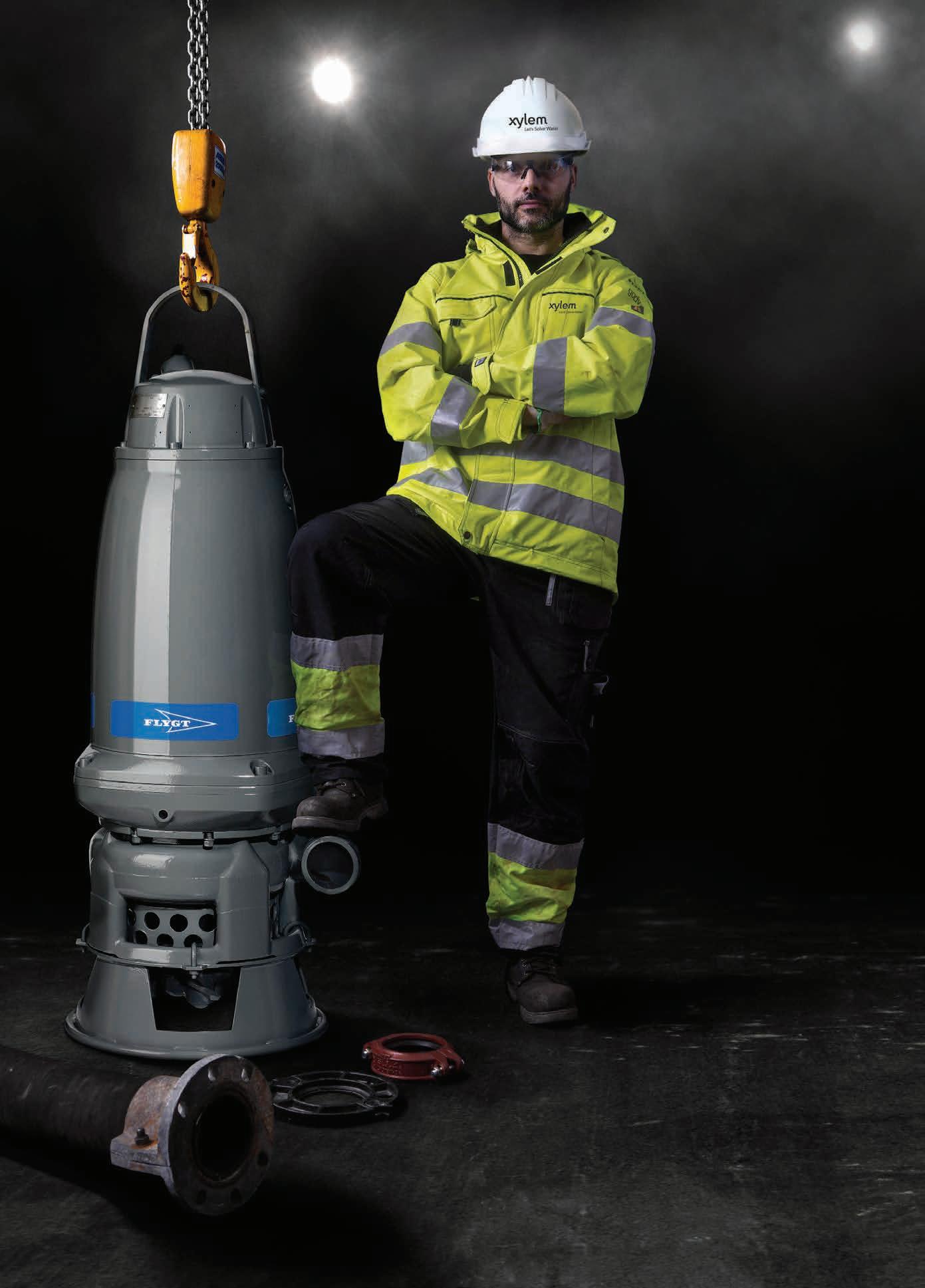
OF NEW FEATURES
 NORMAL BUCKET The XMOR® excavator bucket is breaking ground within the quarrrying industry.
ADVANTAGES OF RUBBER DONUT SPRINGS
ToThink Engineering is the sole supplier of AB Pneumatics products.
NORMAL BUCKET The XMOR® excavator bucket is breaking ground within the quarrrying industry.
ADVANTAGES OF RUBBER DONUT SPRINGS
ToThink Engineering is the sole supplier of AB Pneumatics products.
20 32 42 OFFICIAL JOURNAL OF THE INSTITUTE OF QUARRYING AUSTRALIA MARCH 2023
LOAD
The L260H from Volvo Construction Equipment is supplied to Australia by CJD Equipment.
Quality and performance, you can rely on

With a new factory designed 5.5m3 bucket, in addition to new heavy duty axles, brake cooling package, larger counterweight, auto digging system and advanced joystick steering system (AJSS) as standard, Komatsu’s new WA480-8 continues the long tradition of being the industry’s ideal yard loader.
As with all our wheel loaders, key components are manufactured by Komatsu to work together in an integrated package. The WA480-8 comes standard with our Komtrax remote monitoring and location system, backed by our Australia-wide service and support.
Call us today on 1300 566 287 to find out more.

New Welcome to the family
WA480-8
IN THIS ISSUE
MARCH 2023
VOLUME 31, ISSUE 3
24 HYDRAULIC HOSE REPAIR
Hose failures can cause significant downtime in quarrying operations.
26 JOHN DEERE GOES ‘ALL IN’
John Deere set to present at CONEXPO-CON/AGG 2023.
28 ‘BEST-IN-CLASS’ PRODUCTION
The new Cat hydraulic excavator offers a suite of new features.
30 TUTT BRYANT SUPPORT AUSTRALIAN QUARRIES

NOT A NORMAL BUCKET
The XMOR® excavator bucket is revolutionising the earthmoving industry globally.
A WELL REFINED SCREENING PROCESS
Astec’s high frequency screen is transforming crusher dust into manufactured sand.

Tutt Bryant is supporting Barlows Earthmoving as a supplier of choice.
32 RUBBER DONUT SPRINGS
ToThink Engineering is the sole supplier of AB Pneumatics products.
CALIBRATING SCALES
Regular calibration for on-board weighing systems is essential.
FOUNDATION FOR SUCCESS
Gradco is a pioneer for purchasing cutting-edge earthmoving machinery.

NEW KOMATSU MANAGER sits down with Henrietta Jukes, Komatsu Australia’s new manager for safety and sustainability.
42 A LOAD OF NEW FEATURES
LEILAC CIRCUMVENTS CONCRETE CHALLENGE
Calix technology Leilac is combatting the impact of concrete production.
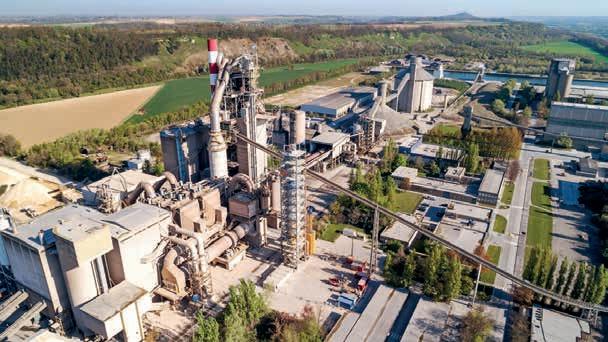
COVER ADVERTISER:
A licensed manufacturer for XMOR® excavator buckets in Australia, ONTRAC Group demonstrates how the revolutionary bucket design is increasing payload by up to 25 per cent without increasing the suspended load.
The L260H from Volvo is supplied to Australia by CJD Equipment.
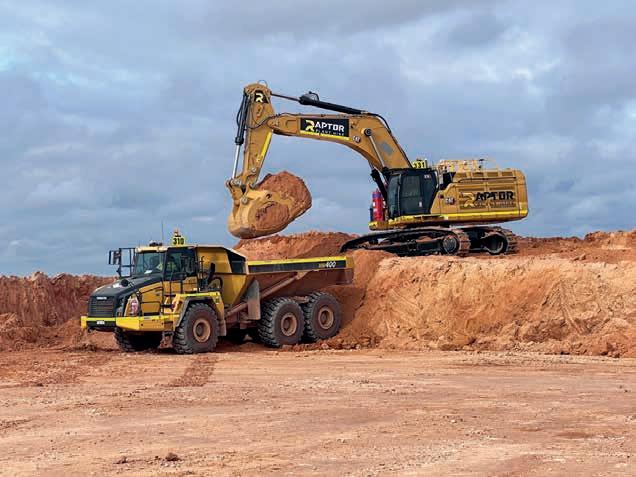
50 A FLICKER OF HOPE
The team from Delta Rent shares its experiences in launching the Flicker of Hope Foundation.
Quarry March 2023 3 44
20 32 42
38 48
IMPROVING SUSTAINABILITY What does quarry sustainability mean in practice? FEATURES 04 FROM THE EDITOR 06 FROM THE PRESIDENT 08 PEOPLE ON THE MOVE 10 NEWS THIS MONTH 18 PRODUCT FOCUS 52 IQA NEWS 56 IQA MEMBER SPOTLIGHT 58 GEOLOGY TALK EVERY MONTH
MAKING SUSTAINABILITY ‘BUSINESS AS USUAL’
Does your business have sustainability embedded in its day-to-day operation, or is sustainability still seen as an add-on, or a nice-to-have?
This is the question that I believe every business, big or small, needs to ask itself and answer honestly – and the answer can often be a catalyst for other changes in the business.
For many businesses, the term ‘sustainability’ can seem daunting, one that they believe can only be achieved through heavy investments and technology overhauls. But, as Steve Franklin, the director and founder of consultancy company Eltirus argues, there are small changes that can lead to big impacts, if they are embedded in day-to-day practices of plant and machinery operators.
Breaking down some of the reasons quarries end up with huge fuel and electricity bills – and by extension more environmental emissions – Franklin argues that excessive idling, low duty cycles, incorrect fleet matching and poor planning are often the key culprits.
Interestingly, our cover story this month is about a company that’s helping solve the issue of low duty cycles by introducing a breakthrough backhoe bucket. The XMOR bucket, manufactured in Australia by
ONTRAC, can improve excavation productivity by up to 20 per cent through improvements in material and engineering design. The result, of course, is fewer cycles required to carry out the same amount of work. Similarly, companies like Komatsu are working on retrofitting their machines with lighter parts to help reduce emissions. This, as Komatsu’s new manager for safety and sustainability, Henrietta Jukes explained, helps companies who cannot afford to switch to hybrid and alternative-fuel machinery.
On the maintenance side, companies like BOA Hydraulics are addressing the environmental challenges that arise when hydraulic hoses fail mid-operation. By allowing quick repair of hydraulic hoses using an innovative hydraulic hose repair and maintenance unit, the BOApod, BOA Hydraulics resolves the excessive idling issue – which is another factor driving up the cost of using diesel powered equipment.
As Franklin concludes, the road to decarbonisation of the quarry industry will not be short, but in the meantime, there are small improvements at every corner, that can lead to big impacts when our efforts are combined.
Tara Hamid Editor

Published by:
379 Docklands Drive Melbourne VIC 3008
T: 03 9690 8766 www.primecreativemedia.com.au
Chief Executive Officer John Murphy
john.murphy@primecreative.com.au
Editor Tara Hamid tara.hamid@primecreative.com.au
Journalist
Lewis Cross lewis.cross@primecreative.com.au
Business Development Manager Les Ilyefalvy les.ilyefalvy@primecreative.com.au
Client Success Co-ordinator
Janine Clements
janine.clements@primecreative.com.au
Design Production Manager
Michelle Weston michelle.weston@primecreative.com.au
Art Director Blake Storey
Graphic Design
Kerry Pert, Tom Anderson, Louis Romero
Subscriptions
T: 03 9690 8766 subscriptions@primecreative.com.au
The Publisher reserves the right to alter or omit any article or advertisement submitted and requires indemnity from the advertisers and contributors against damages or liabilities that may arise from material published. © Copyright – No part of this publication may be reproduced, stored in a retrieval system or transmitted in any means electronic, mechanical, photocopying, recording or otherwise without the permission of the publisher.
4 Quarry March 2023 EDITORIAL
CAN LEAD TO BIG IMPACTS, IF THEY ARE EMBEDDED IN DAY-TO-DAY PRACTICES OF PLANT AND MACHINERY OPERATORS.
FLEXIBILITY MEETS PRECISION.

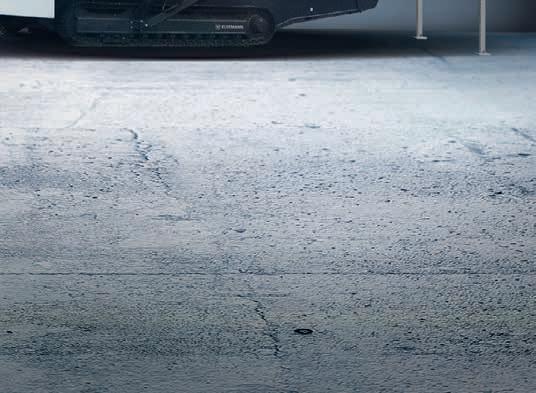

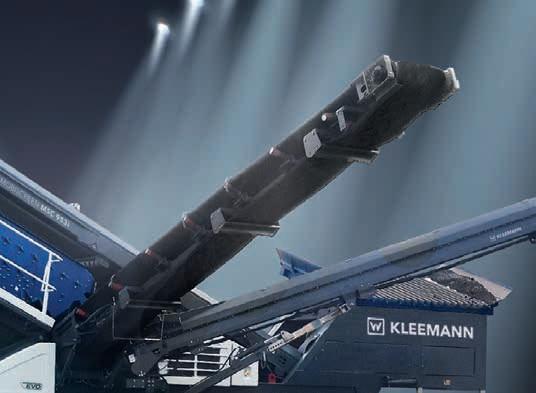



HIGH FLEXIBILITY AND FIRST CLASS SCREENING RESULTS. The new MOBISCREEN MSC EVO screening plants are characterised by high application versatility, excellent transport characteristics and fast set-up times. Precise results with a very wide variety of feed materials and low consumption are guaranteed –where fl exibility meets precision. The effi cient MSC EVOs thus impress with top performance values across the board. www.kleemann.info


MOBISCREEN EVO SCREENING PLANTS A WIRTGEN GROUP COMPANY
WIRTGEN AUSTRALIA PTY LTD · National Ben Lefroy +61 448 030 420 · WA Greg Lewis +61 448 033 441 · QLD/NT Adam Lane +61 459 031 778 · NSW Linn Smith + 61 418 276 649 · VIC/SA/TAS Kyle Fredericks +61 447 539 302 · sales.australia@wirtgen-group.com · www.wirtgengroup.com/australia MOBILE SCREENING PLANTS MOBISCREEN EVO MSC 702 | MSC 703 | MSC 952 | MSC 953
COMMITTED TO STRENGTHENING EDUCATION OUTCOMES
With the first quarter of the year coming to a close, it has been a very busy and rewarding start to the year that I hope will continue as we make our way through the 12-month calendar of events which comprise our competency framework.
We are strengthening our education to further bolster and ensure the competency of our workforce, as a competent workforce is essential for safe and effective quarrying operations.
The framework identifies five essential competency areas relevant to all levels of the quarrying industry:
• Safety and Risk Management
• Leadership and Management
• Emergency Management
• Operations
• Personal Effectiveness
Training and development pathways for all staff should be planned to cover a range of skill and knowledge areas relevant to their role and function. This should include both technical and soft skills.
A competency framework provides a holistic view of the key skills and knowledge required across the industry. These broad areas of competency can then be broken down into levels of skill and knowledge which align with various job roles.
This framework facilitates development planning and ensures that all required competency areas are addressed for each individual.
The importance of these competencies is something the IQA has considered after examining various local and international industry bodies, as well as feedback from a range of industry stakeholders, in the development of its framework.
The IQA competency framework is designed to help organisations and individuals plan professional development to align with the level
of information and knowledge required for different roles around quarrying operations.

With International Women’s Day this month, we once again celebrate the women within our industry and the invaluable contributions they make. We thank those women who are already in the industry and we will continue to innovate within our industry to increase diversity in the workforce, with our International Women’s Day theme for 2023, ‘Cracking the Code: Innovation for a gender equal future’.
Our annual diversity and inclusion day is once again set for the 1st of September and presents an opportunity to encourage broad involvement in our industry.
The diversity and inclusion days are an invaluable tool for our industry to spread awareness, provoke discussion and facilitate the inclusion of all into our industry.
The IQA has and will continue to offer opportunities, training and recognition across all of Australia for all people, in order to provide much-needed support to our industry and continue to grow our industry.

As always, a massive thanks to our branch members, committee members and the broader IQA community, as without your continued support and contributions the IQA would not be as it is today and I actively encourage all members to stay in touch as the year goes on.
Let’s keep working together as we grow skills within the industry and develop competencies for improved best practice in the industry.
Duncan Harris President Institute of Quarrying Australia

www.quarry.com.au
The IQA’s Strategic Plan 2020 to 2025 embodies the following vision, values and strategic priorities:
Vision:
Educating and connecting the extractive and associated industries.
Values: afe and sustainable environment. ersity and inclusion.
orking development skills, careers and life-long learning.
• Networking, connection, trust and communication.
Strategic Priorities:
• Maximise outcomes for industry through education and sustainable practise.
• Increase our relevance.
• A high performing and sustainable organisation.
IQA CONTACTS:
Phone: 02 9484 0577
Email: admin@quarry.com.au
Chief Executive Officer
Kylie Fahey
Company Secretary
Rod Lester
For all education, member and branch enquires please email: admin@quarry.com.au.

6 Quarry March 2023 PRESIDENT’S REPORT
AND ENSURE THE COMPETENCY OF OUR WORKFORCE, AS A COMPETENT WORKFORCE IS ESSENTIAL FOR SAFE AND EFFECTIVE QUARRYING OPERATIONS.
The Institute of Quarrying Australia Educating and connecting our extractive industry
Machine guidance services
Drilling and blasting to a design RL and accurately excavating to it, can make a profound difference to your operations: reduced drill and blast costs and improved load and haul performance, not to mention minimisation of the amount of dust needed to level benches. Talk to us about how we can implement a machine guidance system in your quarry.

+61 7 3051 0606 • L2, 127 George Street Brisbane Q 4000 Australia • eltirus.com KNOW WHAT’S IN THE GROUND | EXTRACT IT VIABLY | ENSURE COMPLIANCE
PROPERTY COUNCIL OF AUSTRALIA APPOINTS NEW CHIEF EXECUTIVE



The Property Council of Australia has announced the appointment of Mike Zorbas as the new chief executive of the organisation, effective from 25 January. Zorbas is the fifth chief executive in the 54-year history of the organisation, which represents the industry nationally and in every state and territory. He previously served as group head of government, media and industry affairs at Lendlease Australia, group head of strategy and corporate communications at Grocon and general manager of government relations at Stockland, roles which engaged governments around the country. Before these roles, Zorbas served as the Property Council’s chief advocate to the Australian Parliament.
KOMATSU APPOINTS GENERAL MANAGER SAFETY AND SUSTAINABILITY

Henrietta Jukes has joined the Komatsu Australia executive team as general manager safety and sustainability, a newly created role as the machinery company strengthens its position on sustainability throughout the workplace and industry. Jukes will work with the executive team to lead safety and ESG strategy initiatives and achieve Komatsu’s strategic goals in these areas. She brings with her a wealth of experience, having worked at Westside Corporation, ERM Australia and GHD in Australia, plus some time in Abu Dhabi with GHD. She has a Bachelor of Geography and Environmental Science (Hons), Post Graduate Diploma in Environmental Management and Post Graduate Certificate in Occupational Hygiene.
DEUTZ EXTENDS CHIEF EXECUTIVE’S TERM
The supervisory board of German off-highway diesel engine maker DEUTZ has extended Dr Sebastian C. Schulte’s term as company chief executive officer by another five years to the end of December 2028. Dr Schulte has held the position since February 2022. Under his leadership, the group successfully launched the Powering Progress strategy program last year. Its objective is to prepare the group for the transformation of the transport sector, to expand the service business further, and to grow in the classic engine business.
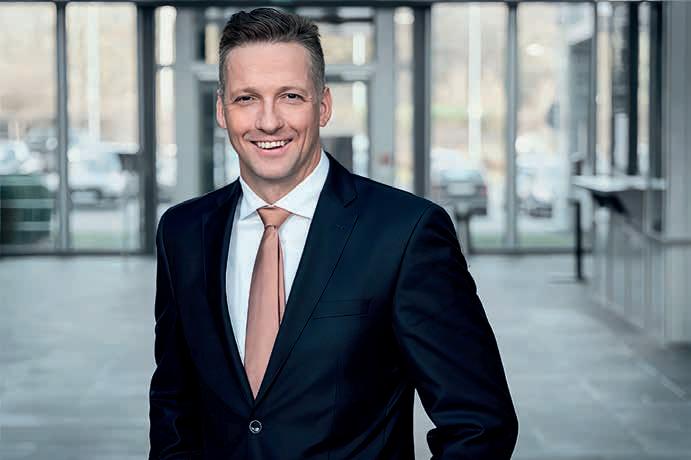
NEW CHIEF EXECUTIVE FOR SOUTHERN PORTS AUTHORITY
Keith Wilks has been appointed as the new chief executive of Western Australia’s Southern Ports Authority. He will take over from retiring CEO Steve Lewis on 1 May. Having spent more than 27 years in the ports and maritime sectors, Wilks has been the chief operating officer at Southern Ports Authority since January 2020 and has previously held senior roles at the Port of Newcastle and Svitzer. Southern Ports include Albany, Bunbury and Esperance ports and had a combined facilitated trade of more than 36 million tonnes in the 2022 financial year.
8 Quarry March 2023 PEOPLE ON THE MOVE
NEVER SETTLE NEVER STOP NEVER IDLE

It takes a different kind of brain behind the brawn. Fired up like a turbo diesel. Gears constantly churning. Hardwired beneath hard hats to solve problems, or avoid them altogether. With you and your crew at the helm, and Deere at your back. The workarounds, ideas and innovations that move earth, and your business, forward. Because that’s what it takes to win in the dirt. And that’s what it means to be Never Idle.
Deere.com.au/en/construction


WESTERN SYDNEY ROAD PROJECTS RECEIVE $1B BOOST
as Treasurer Matt Kean highlighted with how the project plans to deliver millions into the state’s economy.
“This investment will not only ensure people get to spend more time with family and friends instead of in traffic, but it will significantly improve the safety profile of these critical corridors,” Kean said.
“The increased productivity which results from these road improvements will inject millions of dollars into the state’s economy which benefits every single person across NSW.”
The improvements are also targeted to improve flood evacuation routes for families in the HawkesburyNepean Valley and around Pitt Town, as Minister for Metropolitan Roads Natalie Ward said.
Western Sydney is set to receive a boost to the local economy, with the New South Wales Government announcing a $1 billion investment from the WestInvest fund to upgrade critical roads across the region.

Premier Dominic Perrottet said the NSW Government was backing the people of Western Sydney with this major investment in the road network.
“Western Sydney is booming and we are making sure that families who live across this fast growing region have the very best roads and infrastructure to keep them moving,” Perrottet said.
“This $1 billion investment in critical upgrades to major roads across the region is a game changer and will make sure that Western Sydney continues to grow and thrive.
“We are backing Western Sydney communities by making their roads safer, making sure they spend less time and getting tradies and other business to where they need to go quicker.”
The project opens up opportunity for the quarrying and aggregates industry, in the provision of supplies needed for the major road upgrades
“We are working towards widening Garfield Road East to a four-lane divided road, providing a flood evacuation route with increased capacity as well as a better connection to the communities of Marsden Park, Box Hill, Richmond, Schofields and Rouse Hill.”
“The Pitt Town Bypass is also a project the community has been calling for so I’m incredibly pleased we can deliver it, significantly increasing the community’s resilience to flooding events.”
The funding is planned to support a range of significant road projects across 15 Local Government Areas. •
EPA VICTORIA PROPOSES NEW SEPARATION GUIDELINES
The Environment Protection Authority Victoria (EPA) has sought community feedback on two draft updated guidelines that provide advice on recommended industry separation distances and landfill buffers.
The draft guideline includes an updated list of industries and separation distances. Once finalised, the guideline will replace recommended separation distances for industrial residual air emissions (EPA publication 1518).
The Separation Distance Guideline proposes a recommended separation distance of 500 metres for quarrying, crushing, screening, stockpiling and conveying of rock, with or without blasting. This includes quarrying activities with respirable crystalline silica.
The current distance recommended by EPA publication 1518 is 250 metres for quarrying without blasting, which is set to be doubled.
The guideline further notes that the recommended separation can be reduced to 250 metres if activity takes place more than 10 metres below ground.

The Landfill Buffer Guideline provides guidance on what to consider when preparing and assessing:
• planning scheme amendments and planning permit applications for landfills, or that would lead to development within the buffer of an operating or closed landfill.
• EPA permissions applications for landfills, including for development and operating licences and permits.
Once finalised, it is intended that the guidelines will be referenced in the Victoria Planning Provisions. This means planning decision makers will be required to consider the guidelines as relevant.
Planning decision makers and the EPA will consider the proposed guidelines where relevant when assessing applications to establish or expand industry and landfill operations.
After receiving submissions, the EPA will consider all feedback and publish a consultation report, with the draft guidelines to be finalised in mid-2023.
The proposed guidelines are not intended to be used retrospectively to revisit decisions already made by planning decision makers and the EPA.
•
10 Quarry March 2023 NEWS
The $1 billion project opens up opportunity for the quarrying and aggregates industry.
INVESTMENT WILL NOT ONLY ENSURE PEOPLE GET TO SPEND MORE TIME WITH FAMILY AND FRIENDS INSTEAD OF IN TRAFFIC, BUT IT WILL SIGNIFICANTLY IMPROVE THE SAFETY PROFILE OF THESE CRITICAL CORRIDORS.”
MATT KEEN

GLOBAL BLASTING PLAYER TO INCREASE AUSTRALIAN MARKET SHARE WITH STRONG ACQUISITIONS
Global blasting player Enaex is doubling down on its expansion into the Australian mining scene, with two new acquisitions solidifying its presence as a serious competitor in one of Australian mining markets.


Enaex has purchased 100 per cent of Australian blasting accessories company MTi Group and 45 per cent of Portuguese blasting software company O-Pitblast, adding important complementary services to its Australian offering.
MTi Group is Australia’s largest distributor of blasting accessories, supplying major mining companies across the country.

Enaex Australia chief executive officer Edmundo Jimenez said the addition of MTi Group to the Enaex portfolio enhanced the ability of both businesses to provide customers with added value, agility and innovation.
“Over the last 20 years, MTi Group has built a solid global reputation as a leading manufacturer and distributor of blasting accessories,” Jimenez said.
“With a production centre here at home in Australia, plus three more in China, the United States and South Africa, MTi Group has a strong commercial presence across the globe.
“We believe that by working together, Enaex and MTi Group can make a positive, impactful difference on-the-ground at the mine site.”
These latest acquisitions come off the back of similar moves in 2021, which saw Enaex Australia formally enter the market through the acquisition of established Downer Blasting Services and Davey Bickford Australia businesses.
Strong investment into Enaex Australia over the last two years has seen its operating footprint continue to grow in underground and opencut operations across all main mining regions and commodities in Western Australia, Queensland, New South Wales, South Australia, Victoria and Tasmania.
With a core business focus on explosives and blasting and a full product and service offering,
Enaex Australia draws support and expertise from the global Enaex business and financial backing from its parent company, the Chilean conglomerate Sigdo Koppers.
The acquisition of a 45 per cent stake in Portuguese blasting software company O-Pitblast means Enaex Australia can now offer its customers an Enaex-backed blast design software option.
“We recognise that adding an in-house software solution to our offering is an important step forward in building on our competitiveness in the Australian market,” Jimenez said.
“O-Pitblast is the leading provider of blasting software in South America and has built a solid, longterm working relationship with Enaex over the last five years.”
Enaex has more than 100 years of operational experience in Latin America’s explosives and blasting industry. The company’s growing global footprint covers all main mining regions with its headquarters in Chile and operations throughout the Americas, Europe, Africa and Asia-Pacific. •
12 Quarry March 2023
“WE BELIEVE THAT BY WORKING TOGETHER, ENAEX AND MTI GROUP CAN MAKE A POSITIVE, IMPACTFUL DIFFERENCE ONTHE-GROUND AT THE MINE SITE.”
EDMUNDO JIMENEZ
NEWS
Enaex has more than 100 years of operational experience in Latin America’s explosives and blasting industry.



GLOBAL MARKET REPORT REVEALS GROWING DEMAND FOR DIMENSION STONE
Western Europe, Eastern Europe, North America, South America, Middle East, and Africa, with the Asia-Pacific region being the largest region in the dimension stone mining and quarrying market in 2021.
The report suggests that the growth in the dimension stone mining market is due to increasing demand in the construction and real estate industry.
Demand present in these industries refers to the use of dimension stone as one of the most sustainable materials used in construction, cladding, paving and other applications, for the purpose of building and adding permanent additions, such as paths, bridges and sculptures that exist on land outside of core architecture.
A report published from the Business Research Company has estimated that the global dimension stone mining market is expected to grow from $US5.2 billion ($7.33 billion) in 2021 to $US7.02 billion ($9.89 billion) in 2026.
Comprising granite, quartz-based stone, limestone and other major stones, dimension stone is quarried stone that is finished or cut to a particular size and used in many applications and across a variety of industries internationally.

Major players in the dimension stone mining market include Vulcan Materials Company, Martin Marietta Aggregates Inc, CEMEX, and Rogers Group Inc.
The dimension stone mining and quarrying market consists of dimension stone sales by organisations, sole traders, and partnerships that mine and quarry dimension stone in the forms of rough blocks or slabs of stone.

The regions covered in this dimension stone mining and quarrying market report are Asia-Pacific,
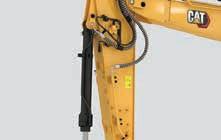

M1 PACIFIC MOTORWAY EXTENSION PROJECT NEARS START DATE
The work on the Pacific Motorway Extension to Raymond Terrace in New South Wales has taken a step closer to beginning, with contractors locked in for the project.
The Australian and New South Wales Governments have announced John Holland/Gamuda Joint Venture and Seymour Whyte Constructions as the successful contractors to carry out the design and build for the southern and northern sections of the build respectively.
The John Holland/Gamuda Joint Venture are set to build the 10-kilometre southern section that extends from Black Hill to Tomago, and Seymour Whyte Constructions will build the fivekilometre northern section that bypasses Heatherbrae.
The project is being delivered using two collaborative design and construct contracts to ensure innovation, efficiency and value for money in bringing this extension to life.
NSW Regional Transport and Roads Minister Sam Farraway said the project will benefit NSW locals.
“The M1 extension to Raymond Terrace will transform travel in this region by freeing up 25,000 vehicles away from key congestion areas, saving motorists around nine minutes off their trip,” Farraway said.
“This is an exciting time for the Hunter and NSW as this project, together with the Coffs Harbour bypass, will provide the remaining major upgrades to complete a free-flowing route between Sydney and Brisbane with no traffic lights, making getting from A to B easier for motorists.
As the demand for construction continues to increase within Australia, this report has relevance to the Australian quarrying industry with how it forecasts demand for the specifically sized and finished dimension stone.
According to information from the Victorian Earth Resources Regulator, the dimension stones used most often in Victoria are bluestone, sandstone, granite, slate, marble, gneiss, and limestone, with bluestone dominating dimension stone production in Victoria and granite dimension stone being produced nationwide.
“We delivered the duplication of the Pacific Highway and now we’re delivering the final piece of the puzzle, which will take travelling in NSW forward.”
The Australian and NSW Governments are jointly funding the $2.1 billion M1 Pacific Motorway Extension to Raymond Terrace project on an 80:20 basis.
Federal Infrastructure, Transport, Regional Development and Local Government Minister Catherine King spoke on the Australian Government’s plans to further support states and territories through this project and others like it.
“The Australian Government is partnering with states and territories across the country to deliver the projects that matter,” King said.
“This project will deliver local jobs in construction while ensuring a safer, faster commute for locals and I look forward to seeing major works getting underway and the benefits flowing.”
The extension is expected to be open to traffic in mid-2028. •
14 Quarry March 2023 NEWS
The Asia-Pacific was the biggest player in dimension stone mining and quarrying in 2021.
THE REPORT SUGGESTS THAT THE GROWTH IN THE DIMENSION STONE MINING MARKET IS DUE TO INCREASING DEMAND IN THE CONSTRUCTION AND REAL ESTATE INDUSTRY.





















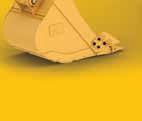



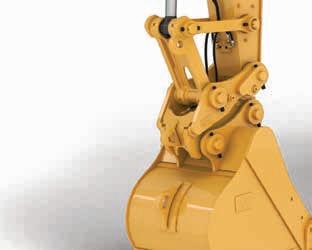























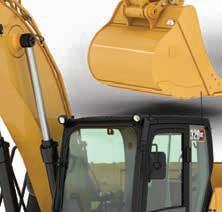




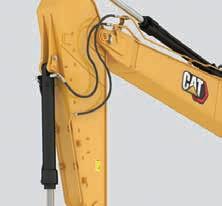
































WA FLOODS LEAVE CRITICAL INFRASTRUCTURE DAMAGED
The floods in the Kimberley region in Western Australia have caused significant destruction to critical infrastructure, including houses, roads and bridges that need to be rebuilt.
Western Australian Premier Mark McGowan said it could take months before authorities can restore critical infrastructure in remote towns ravaged by the state’s worst floods on record.
Former tropical cyclone Ellie saw the town of Fitzroy Crossing hit with record water levels last week, with residents needing to be evacuated, homes inundated and significant damage to roads and bridges. An estimated 100
homes across the Kimberley were feared uninhabitable.
Flood waters have seriously damaged the Fitzroy River Bridge, the only sealed road linking Broome with the rest of the Kimberley and Northern Territory.

An alternate crossing at Fitzroy Crossing – an old floodway – is unlikely to be assessed and activated until the waters recede and the wet season ends, due to the possibility of further floods and weather events.
“The bridge will have to be rebuilt, and any work can’t commence until after the wet season,” McGowan
CUMMINS TO EXHIBIT FUEL-AGNOSTIC ENGINE AT CONEXPO 2023
Cummins has announced plans to showcase the company’s new fuelagnostic 15-litre engine platform with hydrogen, biogas and advanced diesel engines at CONEXPO-CON/AGG 2023 in March.
Planned to be featured at CONEXPOCON/AGG 2023 in Las Vegas, USA, from March 14–18, the new engine platform will be available to view at Stand S84615, South Hall Upper.
The largest construction show in North America, CONEXPO-CON/AGG 2023, provides a unique chance to interact and connect with equipment manufacturers and to experience best practices and new tech from around the globe.
The new fuel platform that is to be on display, offers original equipment manufacturers (OEM) the opportunity to
accelerate the decarbonisation of heavyduty off-highway applications.
Designed for the next level of emissions, the new platform from Cummins has a significant increase in power density with a more compact installation envelope, enabling OEMs to increase machine capability and productivity with no impact on running costs.

The 15-litre next-generation engine utilises a common base engine with cylinder heads and fuel systems, for its fuel-agnostic architecture, that enables it to be specifically tailored for hydrogen, natural gas, diesel and biofuels, including hydro-treated vegetable oil (HVO).
The engine will be available with ratings from 400 to 530 horsepower (hp) and a peak torque of 2600 newton metres (Nm). For applications powered
said. “This is a massive logistical exercise and will take a long period of time.”
A key supplier of construction materials to the region, Kimberley Quarries, operates the Nillibubbica Quarry 100 kilometres east of Broome. The quarry’s operations manager Jim Sweet said the company’s operations were not impacted by the floods.
“We were fortunate our region did not receive as much water as Fitzroy Crossing and Derby.”
He said the quarry was getting ready to cater to additional demands from Main Roads WA as repair and reconstruction work gets underway.
“We had a big crushing campaign in the middle of last year and we thought that would set us up for this year. But, it looks like we’ll be flat out this year with additional demands from Main Roads,” Kimberley Quarries’ director Darren Puertollano told Quarry
Kimberley Quarries’ operations support road and building construction works in the Kimberley, Pilbara, Greater Geraldton regions of Western Australia and parts of the Northern Territory.
“We supply any material required for roads construction. We also supply to all concrete operations in Broome, Derby and some of the Shires,” Puertollano said.
by renewable biogas, the engine will offer ratings from 400 to 510hp with a peak torque of 2500Nm available. The advanced diesel version features will offer a broad power range of 450 to 650hp, with an impressive 3200Nm peak torque.
Cummins, a global power leader, is a corporation of complementary business segments that design, manufacture, distribute and service a broad portfolio of power solutions commonly used in the quarrying industry.
The company’s products range from diesel, natural gas, electric and hybrid powertrains and powertrain-related components including filtration, aftertreatment, turbochargers, fuel systems, controls systems, air handling systems, automated transmissions, electric power generation systems, batteries, electrified power systems, hydrogen generation and fuel cell products. •
16 Quarry March 2023
NEWS
The only sealed link across the region — the Great Northern Highway — was almost completely washed away in parts, severing towns.
“THE BRIDGE WILL HAVE TO BE REBUILT, AND ANY WORK CAN’T COMMENCE UNTIL AFTER THE WET SEASON. THIS IS A MASSIVE LOGISTICAL EXERCISE AND WILL TAKE A LONG PERIOD OF TIME.”
Mark McGowan
KOBELCO XD SERIES
The new XD Series is engineered for the most demanding applications. Built on Kobelco’s rock-solid reputation for quality and reliability, these extreme duty machines feature a rugged machine body with comprehensive additional reinforcement where it matters most. These machines take strength and durability to an all new level – delivering increased performance across even the harshest work sites. Built for power. Built for reliability. Built to last. The new Kobelco XD Series.

kobelco.com.au | 1300 562 352 @kobelcoaustralia
PRODUCT FOCUS
EPIROC RELEASES UPGRADED SCOOPTRAM LOADER
Epiroc released the latest upgrade to its largest available loader on the market – the Scooptram ST18.
Thanks to customer feedback, several improvements have been made both on the base machine itself and to the Rig Control System (RCS). These updates will all-in-all lead to a better customer experience. The transmission performance, steering relief system, electrical system, and bucket dumping time are among several updates that have been addressed.
With the new update, the machine enjoys increased productivity, a more agile feeling, as well as overall improved quality. For more information, visit: www.epiroc.com
THE NEW LIEBHERR CRAWLER EXCAVATORS

Liebherr has introduced a new range of crawler excavators of the 5.2 and 6.2 generations, weighing between 70 and 100 tonnes. The new Liebherr crawler excavators R 972, R 978 SME, R 992 and R 998 SME replace the R 966, R 970 SME, R 976 and R 980 SME models.

The new crawler excavators were developed with the aim of reducing overall energy consumption, something achieved with the Liebherr Power Efficiency (PE) Engine Control system.
This innovation allows a 10-15 per cent reduction in fuel consumption compared to previous models.
The new excavator range is available with the Bucket Fill Assist function. This assistance system has an “anti-stalling” mode that prevents the bucket from jamming when penetrating digging material.
The assist function also enables semi-automatic bucket filling, providing an automated and faster cycle. In addition to reducing fuel consumption by 10 per cent, the Liebherr Bucket Fill Assist system also reduces vibrations, improving operator comfort.

The machines also benefit from increased engine power. The R 992, which replaces the R 976, guarantees five per cent more engine power. The R 998 SME, with an operating weight of more than 100 tonnes, gets a new chassis with larger dimensions. The models thus gain stability and are ideally suited for demanding working environments, such as quarrying and mining.
For more information, visit: www.liebherr.com/en/aus
MDS M515: BEST OF BOTH WORLDS
MDS M515 trommels are renowned for their strength in heavy rock applications, predominantly used to sort large oversize material from blasted rocks.
The MDS M515 stands out from the crowd, as the screening mechanism on the trommel recovers material from sticky clay bound overburden as it tumbles rocks within a heavy-duty drum.

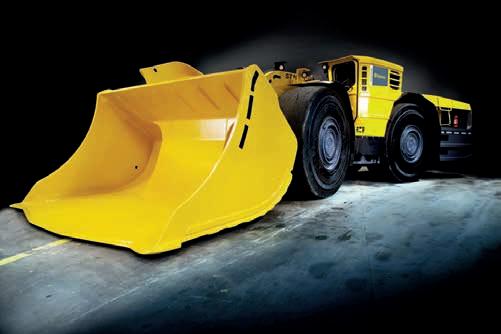
The trommel can remove fines up to 200mm and produce rocks up to 450mm
BELL B45E WATER TANKER: THE FULL PACKAGE
With the proven Bell B45E ADT as its base, the Bell 38,000 litre Water Tanker is a fully integrated OEM solution providing innovative process automation and in-cab controls that deliver effortless production and boost performance.
Ground-breaking features automatically adjust each implement to ensure consistent and efficient operation regardless of the gradient
18 Quarry March 2023
Smart and Green
United. Inspired.
The future of smart mining is already here

Machines within the Smart and Green series are equipped with Epiroc’s Rig Control System, RCS, and feature zero-emission technology. This makes them ready for automation and remote control as well as creating more sustainable operations. RCS also provides a foundation for additional functionality from our 6th Sense offering. So why don’t you go Smart and Green today?
epiroc.com/en-au
Minetruck MT42 SG
NOT A NORMAL BUCKET
The XMOR® excavator bucket is revolutionising the earthmoving industry globally, enabling increased payload without increasing the suspended load. Quarry finds out more from ONTRAC, the bucket’s licensed manufacturer in Australia.
For many years, a popular mindset for both manufacturers and end-users of excavator buckets has been: ‘It’s got to look tough to be tough’. But an innovative design approach and the smart use of premium super steels is challenging that mindset.
The modern bucket looks nothing like its heavy, sharp-cornered predecessors. The XMOR bucket has been designed to increase service life, while providing productivity increase of up to 20 per cent without increasing the suspended load.
Changing the scenes for the mining, quarrying and earthmoving industries in selected markets, such as North America, Africa and Australia, the XMOR bucket range has been engineered to challenge conventional bucket configurations by utilising new design techniques and materials.
Quarry sat down with Adrian Attwood, director of the ONTRAC Group, whose company is the only licensed manufacturer of XMOR buckets in Australia for excavators up to 120 tonnes.


“The simple science behind XMOR,” he said, “is exchanging bucket weight for payload.”
“This is achieved through a combination of highly innovative design, coupled with the exclusive properties of Hardox® and Strenx® premium steels by SSAB, which makes the XMOR bucket up to 15 to 30 per cent lighter than a conventional bucket.
“The Strenx performance steel by SSAB is a 700-grade high strength structural steel and Hardox 500 Tuf is one of the highest grades of wear plates. The advantage with 500 Tuf is that it is still as workable as the 450 grade, but it provides up to 47 per cent longer service life.”
LIGHTER WEIGHT
Design considerations contribute to the reduced plate thickness in XMOR, while a unique patented keel design further reduces weight and enables more structural stability to the bucket. The result is a bucket that can handle more load, resulting in higher productivity without upsizing the existing machinery on a site.
“The ultimate outcome, of course, is to increase the payload inside the bucket by up to 25 per cent,” Attwood said. “In some situations, we’ve achieved up to 50 per cent increase in payload. That’s because the previous buckets had been so incorrectly
sized for the machine that the difference with XMOR was even more tangible.”
The smart design also means the thickness of the steels in the bucket are optimised to reduce weight and increase strength; maintaining service life and resulting in a weight save.
“If you pick up a piece of Hardox 500 Tuf and use it in a bucket in the same way as done traditionally with wear plates, you are not getting any advantages other than the hardness of the material,” Attwood said.
“What XMOR has done with the design, is utilise the properties of Hardox 500 Tuf and Strenx 700 to reduce the thickness of the material, without compromising service life, ultimately resulting in increased payload.”
LICENSED MANUFACTURER
As a specialised manufacturer of excavator buckets based in Melbourne, ONTRAC has been using the Hardox wear plate to manufacture buckets for many years. The company is a member of the global ‘Hardox in My Body’ community, a collective of global manufacturers collaborating with each other and with SSAB to build highly productive equipment using Hardox material.
20 Quarry March 2023 COVER STORY
The XMOR bucket has been designed to increase service life, while providing productivity increase of up to 20 per cent.
XMOR is a groundbreaking new product range for buckets and tipper bodies that form a network of high quality partners to help the industry take full advantage of the latest designs and properties of Hardox steel. While ONTRAC’s history of using Hardox made it a favoured candidate to represent XMOR products in Australia, Attwood said other factors also contributed to the partnership.
“Most traditional bucket manufacturers follow a cookie-cutter approach, where they mass produce a bucket and then try and match that to a machine,” Attwood said. “Our approach is far from it. We specialise on innovative products that add advantages to the industry. Whether it’s building a bucket for digging through merciless rock or maximising the outcome of a machine, we are always engineering a bucket to suit the ultimate outcome.”
It was this approach that helped ONTRAC win the exclusive partnership with XMOR to use its proprietary design for buckets.
“The XMOR network was looking for a business partner that was aligned with its values around maximising performance, reliability and productivity of buckets. We also had to go through certain qualification processes before being granted the licence for manufacturing,” Attwood explained.
INNOVATIVE DESIGN
One of the most innovative aspects of the XMOR bucket is its unique keel design. The
inverted shape of the keel helps minimise ground contact and, by extension, wear on the bottom of the bucket. The keel saddle is also designed to absorb the brunt of the heavy impact, saving the bucket from more expensive repairs.
“The inverted keel design is not only helping with the wear situation, but it also acts as a structural member in the bucket. This further reduces the amount of steel required in the bucket,” Attwood said.
“Inside the bucket, using the Hardox 500 Tuff wear plate and a wear pad on the wearprone areas give the bucket longer service life without increasing its weight.”
The round smooth surfaces of the XMOR bucket are designed to reduce bucket drag, and to allow material to slide into the bucket, further minimising wear.

The curved surfaces are also ideal for reducing drag on the bucket’s surface, Attwood said.
“The rounded corners mean there are no sharp edges to wear or drag. The back of the bucket easily rides in the wake of the cutting edge, which allows the bucket to cop more load. The convex curved shape of the cutting edge lends itself to an ideal shape for maximising production.”
MAINTENANCE
XMOR’s innovations further extend to practical aspects in the field. An example is the patented heel segments, which replace
the heavy welded heel blocks in conventional buckets. These bolt-on heel segments are specifically designed by the XMOR team using Hardox steel to make fast changing time possible.
“We cannot stop wear, but when it happens, we want to make it easy to replace the worn elements,” Attwood said.
“One of our clients has reported that they were able to change the mechanically connected XMOR wing shrouds in a single shift, rather than having to take the bucket offline for days, sometimes weeks, to weld new corner segments in conventional buckets. Obviously, a week offline is a week of lost production. It’s also a week worth of labour to carry out the task.”
ONTRAC also provides a range of Hardox consumables specifically designed for the XMOR bucket’s aftersales support.
CUSTOM MANUFACTURING
ONTRAC manufactures XMOR buckets in two configurations: The BHB-series and the BHCseries. Further customisations are possible within each series.
“Each bucket design targets the varied rock densities and conditions we experience here in Australia. Typically, the BHB is suitable to bulk earthworks and lighter duty applications, whilst the BHC steps up the flight to handle severe and abrasive rock conditions,” Attwood explained.
Quarry March 2023 21
A practical design approach and the smart use of premium super steels give XMOR superior properties.
“The B-series, starting at 50 tonne, has a curled lip on the front, which wraps up around the side. The C-series, starting at 80 tonne, has a traditional flat lip, and can handle more ground and hard-wearing material.”
Buckets from either series can also be designed with different configurations to perfectly match the application, Attwood explained.
“For each customer or dealer, we offer to conduct a discovery session, where we look at what’s happening on site, the material type and density, the size of the blast, the downstream equipment and the machine combination. It’s important for us to know the make and model of the excavator and its boom and stick length to ensure the machine’s stability. Then, we will carefully craft or size the bucket to suit that machine, thereby optimising the performance of the end user.”
RETURN ON INVESTMENT
To prove the cost savings possible with the right bucket, ONTRAC also allows its customers to conduct a free value analysis report, to showcase the return on investment and the total cost savings when investing into a premium XMOR bucket.
“If we know what the fuel burn of the machine is, how much the customer is paying per litre for the fuel and how many

hours a day they run the machine, we can demonstrate to them in a certificate from XMOR how much fuel they’ll save, in dollars and litres, and how much carbon-dioxide emissions they will produce over a period of time,” Attwood said.
“These additional savings can easily add up to hundreds of thousands of dollars per year. So, we are not only increasing production, but it also reflects in additional cost savings for the company.”
The result, Attwood observed, is a very fast return on investment for quarries.


“Most of the reports we have generated for customers have shown a return on investment of about one to three months, purely off the back of reduced fuel consumption. When you calculate the cost savings from reducing the number of passes required to fill a truck and all the other benefits of the added productivity, it’s the difference between night and day.”
On busy quarry sites, the difference between using an XMOR bucket and a conventional bucket is reflected in the productive times of all equipment.


“When you are on a quarry and there are trucks lined up to be filled by the excavator, the difference with an efficient bucket like XMOR can be the difference of filling a truck in seven passes, as opposed to what would have been 13 previously. If you consider the flow-on effect, this has an astronomical impact on labour, fuel savings, and optimising the whole process.”
Attwood’s recommendation to quarries is to try maximising their productivity by choosing the right bucket.
“For anybody eager to increase production at minimal expense, XMOR is the only way to go,” he said. “We have situations where clients have a production issue, but they can’t afford to upgrade their machines. Converting to an XMOR bucket is simply taking your foot off the hose and getting more done in less time, with less personnel.” •
22 Quarry March 2023 COVER STORY
One of the most innovative aspects of the XMOR bucket is its unique keel design.
ONTRAC Group is the only licensed manufacturer of XMOR buckets in Australia, for excavators up to 120 tonnes.


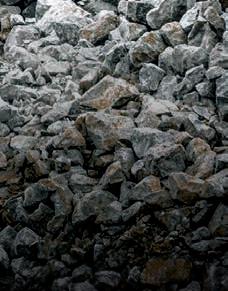






For extreme applications The R 970 SME crawler excavator has a reinforced structure and features superior bucket capacities – in both backhoe and folding bucket versions. This enables it to achieve a higher level of productivity. www.liebherr.com Crawler excavators Liebherr-Australia Pty Ltd • em-sales.las@liebherr.com • www.facebook.com/LiebherrConstruction www.linkedin.com/company/liebherranz • www.liebherr.com.au
ONSITE HYDRAULIC HOSE REPAIR RE-IMAGINED
Hydraulic hose failures can cause significant downtime in quarrying operations. The solution from BOA Hydraulics gives control back to the end user to keep their machines running.
Most heavy machinery and equipment used for quarrying require the use of hydraulic hoses. If a hose blows at a crucial moment in the working day, it can set the operation back by hours, or sometimes days. Still, many quarries choose a reactive approach when it comes to repair and maintenance of hydraulic hoses, which can lead to significant downtime.
BOA Hydraulics, a progressive hydraulic hose solution company, is determined to change that. The company’s BOApod is a mobile, all-weather hose repair unit that can be used to assemble hydraulic hoses onsite, following the same principles used in original manufacturing facilities. The BOApod is integrated tightly with the BOAhub app inventory management and reordering application, giving customers an autonomous solution to repair and maintain their hydraulic hoses onsite.


THE BIRTH OF BOAPOD
The chief executive officer and co-founder of BOA Hydraulics, Simon Boakes said the idea for BOApod came as a result of years of experience, observing “the norm” in hydraulic hose repair and a mission to “find a better way.”
“As a company, we are passionate about increasing productivity in the primary industry. We think hydraulic hose blow outs are a much bigger issue than most people realise. With so much demand for primary products, untimely hose failures can limit the production capacity significantly,” he said.
Research by the University of Wollongong suggests that in a surface mining operation, the unscheduled downtime due to a hose can reach up to 37 per cent of the entire unscheduled downtime for a prime mover hydraulic shovel. BOA Hydraulic estimates that the numbers are roughly the same for quarrying operations.
Since early 2000, Simon and co-director and brother Greg, have had an ear out in the hydraulics industry. With over 55 years’ collective experience and a background in the auto electrical market, they heard one common message from their customers, which was that hydraulic machinery users felt they were being penalised with downtime.
“We thought there must be a better, more cost-effective way to address hose failures pro-actively, rather than reactively. It was this idea of increasing hydraulic uptime that gave birth to the BOApod,” said Greg.
The innovation from BOA is an all-terrain mobile hydraulic hose repair and maintenance facility, which houses European precision crimping and cutting machinery along with quality matched hose and fittings, delivered with all the tools and training needed to repair and maintain hydraulic hoses onsite.
The BOApod has evolved over the years,
24 Quarry March 2023 MAINTENANCE
BOApod is a mobile, all-weather hose repair unit from BOA Hydraulics.
going through several iterations to add additional features depending on the customers’ needs. Additional elements such as solar panel charging, remote controlled hose reel system, underbody drawer and toolbox, contamination free hose measuring and cutting surface along with accessories to run a proactive preventative maintenance program ensure error-free hose repair.
“What we want is that anybody, with minimal experience, can assemble a hose as though it was done in a factory,” said Simon. “Of course, we are not downplaying the safety aspect. What we are providing is a facility that enables people to use the specifications provided by hose and crimp manufacturers to create foolproof hoses onsite.”
BOA has also successfully launched an app called the BOAhub, which helps with all of the processes around self-sufficient onsite hose manufacturing, inventory management, and easy re-ordering features, allowing technology to play a part in this journey.

THE BOA MODEL
One of the strategies at BOA is to make hydraulic hose repair available to everyone. As such, the company uses a subscription model where users can obtain a BOApod unit with minimal upfront investment and enjoy ongoing support and training from experienced BOA technicians.
“Our training is a key part of our solution,” said Greg. “We have a certified training program endorsed by German company Uniflex-Hydralik to deliver a world-class hydraulic training program to our customers and make sure what they are doing it up to a very high standard. It’s part of the turnkey solution that we offer. We can even provide re-training to our customers as more staff come on board.”
Following its initial success in New Zealand since 2014, BOA started introducing the BOApod units in Australia some years ago, successfully placing 115 units in remotely

located mining, quarrying, forestry and civil operations. The solution, Simon said, has been well received in Australia.
“The feedback we have received is that our unit is delivering even more value to our Australian customers. Because of the vastness of the land, everything is more remote. Some of the people we speak to say that previously, they have had to wait days for their hoses to be repaired,” said Simon.
THE COST OF DOWNTIME
The BOA team also sees environmental benefits in the pro-active repair methodology offered by their solution.
“From an environmental perspective, every time a critical hose fails, it could lead to a 44 gallons drum of oil pouring on the ground. So, it’s not just the cost of the oil that’s lost, but the environmental implications of that are also grave,” said Simon.
To help its customers calculate the real cost of downtime, and the effects on the environment through oil loss, BOA has developed a downtime calculator tool, which anyone can access to see the savings they could make with the BOA solution.
“From our conversations with clients, we found that the downtime consideration wasn’t top of mind, particularly in industries like forestry, civil and quarrying. The reason for developing the downtime calculator was to get people to see there is a real tangible cost to losing time,” Simon said.
“In the example of a quarry in Queensland, they estimate it would cost them up to
$50,000 an hour in lost production if they had a machine down. Using one of our BOApod trailers, the customer is saving money by not only not having to wait when replacing one of those hoses, but by replacing hoses before they blow.
“In another example, our customer calculated that he would save up to $950,000 per month by avoiding hose failures based on a saving of $10,000 per hour. His business uses 24 pieces of equipment, and you see how costs can build up in a business of such scale.”
THE JOURNEY CONTINUES
According to Simon, BOA Hydraulics will continue to innovate for smart onsite hose solutions. The team is preparing to introduce new capabilities to BOAhub in the near future, which would further streamline its automated ordering and invoicing capabilities, as well as add further quality controls for the repaired hoses.
“What BOA is offering is light years ahead of what you get in the market currently,” said Simon
According to Simon, BOA’s vision is to help companies find a better way of repairing and maintaining hydraulic hoses that helps them improve productivity and self-sufficiency.
“Smart hydraulic hose management is critical if you want to remain competitive and meet supply demands into the future. Don’t be the company that looks back and wishes they had done it two or years ago, because that would be a massive lost opportunity.” •
Quarry March 2023 25
The BOAhub app enables quarries to accurately manage their hydraulic hose inventory.
JOHN DEERE GOES ‘ALL IN’: PREVIEWING LARGEST CONEXPO CON/AGG PRESENCE TO DATE
John Deere will have its largest presence ever at CONEXPO-CON/ AGG 2023 this March in Las Vegas. Totalling approximately 7500 square metres of booth space, John Deere and Wirtgen are combining forces for the first time at CONEXPO-CON/AGG, encompassing a 6500 square metre booth outside in the Silver Lot (S5020). Inside the West Hall (W40844), an additional 1000 square metre is dedicated to the future of John Deere technology in the construction space.
The John Deere and the Wirtgen Group presence offers customers an engaging experience and an all-encompassing snapshot of the future of construction through industry-leading equipment and technology.
In addition to its expansive and interactive booth experiences, exhibition attendees can anticipate the following from John Deere and the Wirtgen Group:
• One cohesive booth showcasing both John Deere and the Wirtgen Group’s latest machines and technologies.
• 6500 square metre of outdoor space displaying world-class John Deere and Wirtgen Group equipment, technology, and application experience
• 1000 square metre of indoor space focusing on John Deere technology, forward

thinking innovative solutions, and John Deere Power Systems.
• 68 machines on display between John Deere and the Wirtgen Group.
• Six machines that feature SmartGrade control functionality. Wirtgen Group machines equipped with the latest technologies such as: Wirtgen Performance Tracker, AutoPilot 2.0, 3D Paving, Smart Compact, Spective Connect.

• Nine compact construction machines on display such as skid steer loaders, compact track loaders, compact excavators, and compact wheel loaders.
• Nine electric or hybrid electric John Deere and Wirtgen Group machines on display.
• 36 World Premieres of brand-new equipment across the construction, roadbuilding and compact construction segments.
• Four production systems, showcasing the current priority areas for John Deere and the Wirtgen Group, including Aggregates, Site Development, Roadbuilding, Underground.
• One centre feature area for the future generation of Deere built excavators.
• Three educational sessions featuring commentary from John Deere and Wirtgen Group experts.
Understanding contractors’ desire to have conversations relevant to their production system needs, John Deere and the Wirtgen
including Aggregates, Site Development, Roadbuilding, and Underground, were created to emphasise their core business areas. Each production system will showcase key components, equipment, and features relevant to their needs and presented firsthand by John Deere and Wirtgen Group brand representatives.
For those exploring educational opportunities, John Deere is hosting a session that will feature Justin Steger, Solutions Marketing Manager at John Deere Construction and Forestry, Thursday, March 16 at 1 p.m. titled “How Grade Control Impacts Earthmoving Productivity.” From the Wirtgen Group, Tom Chastain, Milling Product Manager, will discuss “Best practices in Milling and Profiling” on Thursday, March 16 at 9:30 a.m. And lastly, Tim Kowalski, Application Support Manager – HAMM, will lead a discussion titled “Compaction 101: Doing the Right Things, the Right Way” on Friday, March 17 at 10:45 a.m.
CONEXPO-CON/AGGisNorthAmerica’slargesttrade show, and it will take place from March 14 to 18 in Las Vegas, Nevada. More information will be announced leading up to the show.
26 Quarry March 2023 MACHINERY

I NCRE ASE YO UR HYDR A ULI C U PT IM E WIT H BOA HY D RAUL ICS . Th e worl d’s fastest hyd r au li c hos e repair s. bo ahy dr aul ics.com | 18 0 0 40 30 40
NEW CAT 340 EXCAVATOR OFFERS ‘BEST-IN-CLASS’ PRODUCTION
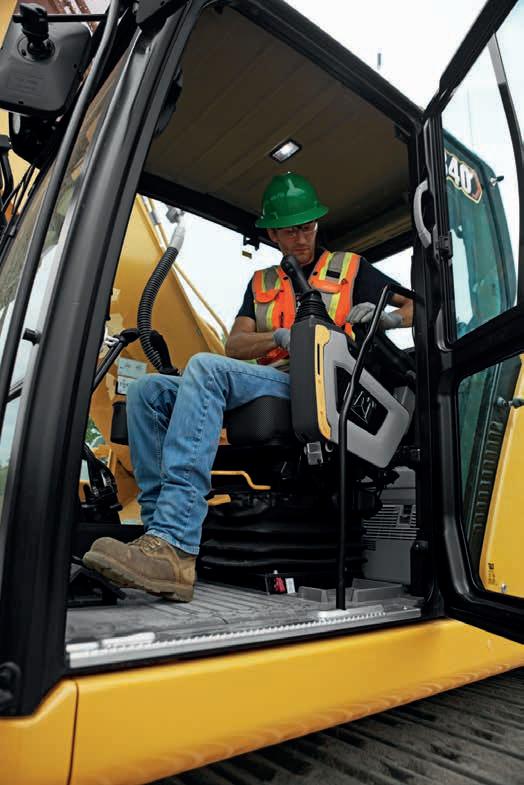
The new Cat hydraulic excavator offers more engine power, while a reinforced structure ensures durability in harsh digging, truck loading and hammer applications.
The new Cat 340 model hydraulic excavator features a more powerful engine, wider track gauge, and 6.8 tonne (7.5-ton) counterweight to increase productivity by 10 per cent over the Cat 336 (07 series), giving customers a wider choice of Cat excavator models in this important production weight class. Its increased power and stability, combined with next generation electrohydraulic system efficiency, make it an ideal choice in the 40-tonne (45-ton) class when moving ‘tonnes per hour’ matters.
POWERFUL AND RUGGED
Customers will experience a new level of performance with the new Cat 340. Improvements made over the previous model make the new excavator more productive and stable with larger work tool options, giving customers more flexibility to complete a wider range of projects. The new excavator’s reinforced structures ensures long-term durability during harsh digging, truck loading, and hammer applications. This coupled with the reliable Cat C9.3B engine that has collectively accumulated over 14 million service hours globally attests to its long-term reliability.
The Cat 340 is designed with features to help the excavator power through the most demanding jobs while saving fuel. Three engine modes match excavator power to the

demands of the job while saving fuel. Power mode delivers maximum power to meet the most demanding tasks all day. Smart mode automatically matches engine and hydraulic power to digging conditions to lower fuel consumption without intruding on even the most seasoned operator’s technique. Operators can simply operate like normal and let Smart mode manage the power when it’s needed and save fuel when it’s not. Reducing engine speed to a constant 1500 roundsper-minute (rpm), Eco mode minimises fuel consumption.
LOW MAINTENANCE
One of the design objectives in the Cat 340 model is to help owners lower their operating cost and reduce downtime. The potential for synchronised 1,000-hour oil and fuel filter service intervals reduce downtime. The extended intervals can also eliminate labour cost for nine oil and fuel filter changes and parts cost for 27 oil and fuel filters over 10,000 machine operating hours compared to many competitive 30 to 40-ton excavators. Industry leading high-ambient temperature capability of 52˚C, cold-start capability at -18˚ C, and the ability to work at up to 4500 metres above sea level make the 340 suitable for any environment. Auto hydraulic warmup in cold temperatures gets the machine to work faster and prolongs the life

EARTHMOVING 28 Quarry March 2023
Customers will experience a new level of performance with the new Cat 340 hydraulic excavator.
of machine components. The air intake filter with pre-cleaner features high dust capacity, and a high-efficiency hydraulic fan offers optional automatic reverse to keep cores free from debris.
Information such as location, hours, fuel usage, idle time, maintenance alerts, diagnostic codes, and machine health can be easily tracked and viewed online via web or mobile applications via Cat Product Link. This can allow dealers to remotely connect with the machine to diagnose fault codes and update operation software, all while helping to maximise the machine uptime.
SIMPLE, COMFORTABLE OPERATION
The Next Generation cab brings operator comfort and ergonomics to a whole new level. Deluxe cabs come with a heated airsuspension seat with multiple adjustments for seat, console, recliner and armrest. A tilt up left-hand console allows for easier
access in and out of the machine. Ergonomic enhancing features like the front-facing control panel, keyless pushbutton start and optional bluetooth key fob, and large touchscreen monitor with jog dial keys come standard, which simplifies the operation. At the core of the Cat excavator range, simple, easy-to-use technology helps operators and owners get the most out of their machine. Getting more done with standard factory technology is a new benchmark in excavator performance. Optional Cat Stick Steer makes travel and turning much easier by using the joysticks to control travel functions. A host of standard technologies – Cat Payload onboard weighing, Improved Grade Assist for maintaining grade, and 2D Grade with depth and slope indication – elevate operator efficiency and machine productivity. All Cat Grade systems are compatible with radios and base stations from top third-party

technology suppliers. Operators can store up to four depth and slope offsets to quickly cut to grade without a grade checker. Auto Hammer Stop warns operators after 15 seconds of continuous firing and then shuts off the hammer after 30 seconds to prevent wear and tear. Auto Dig Boost and Auto Heavy Lift increase bucket penetration and lift capacity by eight per cent, and Lift Assist ensures operators have real time indication of the suspended load mass and load centre identifying where it can be safely lifted within the excavators working envelope to help avoid tipping the machine.
Caterpillar is revolutionising how owners and operations use machines to maximise performance and productivity all while having the lowest operation costs to improve their profitability. The Cat 340 has to be experienced to be appreciated – it sets a standard that is industry leading and paves the way forward. •

Quarry March 2023 29
The design objective in the Cat 340 model is to help owners lower their operating cost and reduce downtime.
BARLOWS EARTHMOVING ADDS CRUSHER FROM TUTT BRYANT EQUIPMENT
With a positive history working with Barlows Earthmoving in supplying crushing and screening equipment to the aggregates company, Tutt Bryant is again supporting the business as supplier of choice for Metso Outotec products.
Barlows Earthmoving is a family owned and operated business with over fifty years of knowledge specialising in on-site contract mining and construction, as well as crushing and screening production.
The company, operated by Jeffrey, Stewart and Paula Barlow, services the Central Queensland area, from Rockhampton and surrounds to as far south as Gladstone.
Barlows Earthmoving operates the Tanby-1 hard rock and sand quarry, as well as the Coorooman hard rock quarry, enabling it to source quality sand and quarry products for its clients.

Director Jeffrey Barlow said the difference that Barlows Earthmoving makes is strongly attributed to the knowledge of its workforce.
“Our company is made up of highly experienced individuals with a passion for mobile crushing plant operations,” Jeffrey said.
“The Barlow family prides itself on achieving the highest work standards. As our workload at several different sites increases, we are determined to complete our work on time and without exception.”
TRUSTED BUILD QUALITY
Having an extensive fleet of Metso Outotec Lokotracks already, including a LT106, three LT200HP’s, two LT7150 VSI’s, four finishing screens and a scalper, has not stopped brothers Jeffrey and Stewart from looking to add another cone crusher, supplied by Tutt
Bryant, to keep up with the growing workload of the business. Jeffrey and Stewart know from experience in the industry, the benefit of operating machinery with high build quality and proven reliability. Looking at the products that have served the business well, the first LT200HP owned by the business has over 11,000 hours and is still in service today.
“With our experience with Metso Outotec products, we expect that this machine alone will last over 30,000 hours,” Jeffrey said.
“It’s part of why our fleet is made up of these machines. We have had an overwhelmingly positive experience with Metso Outotec products delivering the results that we need.”
When enquiring about a new LT200HP to add to their fleet, Jeffrey and Stewart spoke to Tutt Bryant’s Queensland and Norther Territory crushing and screening account manager, Darrell Porter, who suggested the new LT200HPX.
A NEW LOKOTRACK
The new to market Lokotrack LT200HPX is equipped with a Metso Outotec Nordberg HP200 cone crusher and features a double deck pre-screen option that offers up to 30 per cent more capacity than a comparable cone without pre-screen.
The LT200HPX additionally has the ability to scalp out before the cone, thereby enhancing concrete aggregate production in both higher capacity and with lower wear. In addition, due to being a Metso Outotec machine, the LT200HPX fits in with the existing plant arrangement present at Barlows Earthmoving.
Porter supplied the Barlows Earthmoving team with a comparison between using the LT200HP and the LT200HPX
as well as a process layout including the LT106, LT200HPX and ST3.8, to supply evidence as to how it would increase production.
“After seeing the specifications of the machine and how it works as opposed to other equipment, we agreed that the LT200HPX would be the best option for our expanding workload,” Stewart said.
As the first sold in Australia, Tutt Bryant Equipment’s specialised service technicians worked in conjunction with staff from Metso Outotec Australia to provide onsite training on usage, fault finding and maintenance procedures with the Barlows Earthmoving staff. On using the LT200HPX, Jeffrey said that the machine “is working well in making our concrete aggregate.”
“Stewart is looking forward to taking it out on his road base job where he expects it to really shine.”
The strong relationship built between Barlows Earthmoving and the team at Tutt Bryant, Paula said, has gone a long way in facilitating the decision to use Metso Outotec branded equipment.
“I could not speak highly enough of the Tutt Bryant Equipment sales and support team,” Paula said.
“We have had a long relationship with Tutt Bryant and consider them to be a part of the Barlows Earthmoving family.”
Tutt Bryant continue to support Barlows Earthmoving with technical, field, workshop and parts provided from Tutt Bryant’s Queensland branch.•
To find out how this equipment can benefit you, contact Tutt Bryant Equipment on metso@tuttbryant.com.au or 1300 658 888.
30 Quarry March 2023 EQUIPMENT


THE ADVANTAGES OF RUBBER DONUT SPRINGS
ToThink Engineering is the sole supplier of rubber donut springs from Irish manufacturer AB Pneumatics. Director Darren Toth explores the benefits of using these springs for isolating vibrating equipment.
Rubber springs are an essential component in any plant that deals with vibrating machines, such as crushing and screening plants. In recent years, improvements in material design have led to the development of springs that incorporate both rubber and reinforced fabrics, allowing these springs to carry greater loads while isolating the vibration.
AB Pneumatics, with over 30 years’ experience in developing shock absorber sleeves and seat air springs for the automotive industry, has been developing its product, known as the Donut Rubber Spring, since 2009.

The Donut Rubber Spring has undergone a lengthy research and development process in Northern Ireland – a region with one of the largest concentration of crushing and screening manufacturers in the world.
In Australia, Melbourne-based business
ToThink Engineering acts as the sole distributor of AB Pneumatics’ springs. Toth said the services of ToThink Engineering go beyond selling the product, with the company’s technical capabilities also coming into play.
Additionally, ToThink Engineering uses the Donut Rubber Spring in the vibrating screens and feeders that are supplied via ToThink Equipment – an arm of the business that caters directly to the manufacture and distribution of vibrating screens, pan feeders and apron feeders to quarrying and extractive industry operations.

“These vibration-isolation springs have fabric reinforcement to provide suitable load carrying capabilities. Their low natural frequencies provide excellent isolation of forced frequencies and make them highly suitable as a replacement to steel coil springs,” Toth said.

“The main market for this product is currently the materials handling industry, but because of its versatility it can be used as a vibration isolator in many applications.”
CUSTOM MADE SPRINGS
According to Toth, product availability is a key concern when it comes to replacing the springs. As such, ToThink Engineering is in a good position to support its customers with stock available at its new premises in Knoxfield, Melbourne.
“Excluding physical inspections, which are time consuming and require the machinery to be off, there are currently no consistent ways to determine whether a spring needs to be replaced. Having springs readily accessible and able to be ordered in and in the customers’ hands in the shortest time possible is important when they potentially break,” Toth said.
For ToThink Engineering, the close relationship with the manufacturer means they always have a good stock of most commonly-used Donut Rubber Springs. Whatever is not in stock can be ordered within two days and shipped via air freight within a short timeframe.
AB Pneumatics’ springs are available in a variety of sizes, to match the common screen brands used in Australia. The relationship between the two companies also means that
VIBRATION CONTROL
32 Quarry March 2023
Donut Rubber Springs have a low natural frequency.



DELTARENT.COM.AU DELTARENT.COM.AU 1300 793 071 1300 793 071 INDUSTRY LEADING SOLUTIONS INDUSTRY LEADING SOLUTIONS 24/7 SERVICE AUSTRALIA WIDE 24/7 SERVICE AUSTRALIA WIDE
DO YOUR LOADER AND EXCAVATOR SCALES NEED CALIBRATING?
Regular calibration for your on-board weighing systems is essential for maintaining accuracy. Positioning technology and machine systems supplier, Position Partners, now offers nationwide calibration services via a fleet of trucks that can support all makes, models and sizes of machinery.
Used on loaders, excavators, skid steers and other quarry plant, on-board weighing systems are relied upon to measure and record material loaded onto road and haul trucks. Trade approved models are also available that enable quarry managers to transact off the weight recorded by the system.

On-board payload technology helps quarry operators to reduce wasted material and increase safety by optimising load distribution for road and haul trucks. Although trucks are commonly fitted with weighing systems themselves, scales on loaders and excavators help to cross-check the accuracy of the truck systems giving managers reassurance that the material loaded is costed and loaded correctly.
Once installed, Position Partners recommends calibration of the on-board scales every six- to twelve months.
“As with all measurement or positioning technology, to ensure systems are working optimally, it is important to have them serviced regularly,” said Josh Allan, construction business manager at Position Partners. “This is even more critical for trade-approved loader scales, where customers are transacting off the system’s measurements.”
With a fleet of trucks, the company will provide nationwide installations, servicing, and calibrations for on-board payload systems fitted to loaders, excavators, telehandlers,
forklifts and other industrial machines.
Position Partners has trucks located in New South Wales, Victoria, Queensland, Western Australia, and South Australia. The Western Australia and Queensland fleet includes larger trucks to accommodate calibrations for minespec equipment. In Queensland, the company is also certified to provide weighbridge calibrations and servicing.
In the larger states, Position Partners will operate regular runs to cover key sites as well as metro regional areas. Customers can simply fill in an online form on the website to register interest and the local coordinator will organise the timing from there.
As the exclusive Australian distributor for Topcon Positioning Systems, Position Partners sells and supports the Topcon range of Loadmaster and Loadex scales. However, the calibration services provided via the truck fleet are available for most brands of on-board weighing systems.
“Our experienced and dedicated weighing team is able to service most makes of on-board scales,” Allan added. “The Queensland and Western Australia trucks are also large enough to support our mining and resource customers with their scale servicing needs and we hope to expand our weighbridge service capabilities beyond Queensland in the future.”
Any customers looking to adopt on-board weighing systems for their loaders, excavators or other industrial machinery can also be fitted by the specialist weighing truck team.
The Loadmaster Alpha 100 solution is by far the most popular option for most quarry customers, according to Allan. “The Alpha 100 has the full suite of options including trade approval to enable transactions off the
recorded weights,” he said. “It gives quarry customers full material movement records and easy dashboard visibility of what has been moved where, to help streamline operations and improve productivity.”
With greater visibility over material movement and the weights loaded into each truck, quarry managers have peace of mind that if a dispute or incident did occur, there is an easily accessible and accurate record of information. The records can assist to prove that correct processes were followed and trucks were loaded within tolerance, mitigating the chain of responsibility risk.
In addition to the productivity and reporting benefits, on-board scales are a simple but effective way to reduce fuel and maintenance costs on heavy equipment. With accurate load information on every bucket load, operators and managers have the data required to optimise loads and reach the target weights with fewer lifts, reducing machine wear and fuel usage. Operators love the Loadmaster and Loadex range because of the efficiency gains from no longer manually inputting data. Instead, the operator can automatically select products, trucks and locations without even touching the screen through the use of GPS, a barcode reader and RF tag reader.
“Adding on-board scales to a quarry is a simple and user-friendly way to increase productivity and the accuracy of material movement, which flows through to the bottom line,” Allan said.
“With our new fleet of service trucks, our customers also have peace of mind that our team is there to support them, whether it’s a technical question to resolve over the phone or a calibration on-site with the truck,” he added. •

34 Quarry March 2023 MAINTENANCE



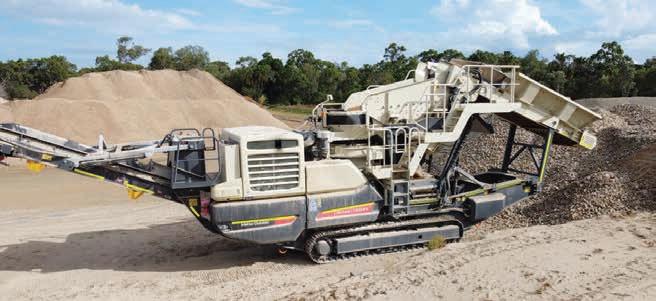






Brisbane | Sydney | Melbourne Adelaide | Perth tuttbryant.com.au 1300 658 888 Lokotrack® LT200HPX™ mobile cone crusher plant is designed for secondary and tertiary hard rock crushing. It is equipped with a 2-deck pre-screen allowing to achieve up to 30% higher capacity. Lokotrack® LT200HPX™ is perfect for producing aggregates for road construction and railroad ballast, as well as asphalt and concrete fractions. Lokotrack® LT200HPX™ Mobile Cone Crusher Follow us on: For more information, contact metso@tuttbryant.com.au Optimised PerformancePre-screen & more Capacity Track Mounted Safe & easy to Operate
BUILDING THE FOUNDATIONS FOR SUCCESS
Since the 1950s, Tasmanian based mining and civil contracting company Gradco has been a pioneer for purchasing cutting-edge earth moving machinery. Director Oliver Diprose speaks with Quarry about why his company continues in the same direction today.
Buying the best and the latest earth moving equipment is a gamble that has paid off well for a contracting business in Tasmania. Having introduced the very first Gradall excavator from the US into the Southern Hemisphere in 1955, Gradco (originally Gradall Constructions) continues to be a pioneer with earth moving machinery, recently ordering the very first 50-tonne Kobelco SK500XD excavator to be rolled out in Tasmania.
GRADCO’S HISTORY
As a family business now in its fourth generation, Gradco has firmly established itself in specialist contract mining, civil construction, environmental and heavy haulage services, not only in its home state of Tasmania, but throughout Australia.
Started from a one-man contracting operation in the 1950s, today Gradco is a diversified mid-tier civil/mining contractor with works across Tasmania and into mainland Australia. The company has a structured management team and a dedicated team of about 250 employees, boasting a machinery fleet with over 260 earth moving plant items, including 60 hydraulic excavators.
Parallel to a very successful contracting business, the quarrying side of the business – known as Van Diemen Quarries – provides a wide range of quarry products through a network of quarries strategically located across Tasmania. The company’s success is owed, to a great extent, to investing in cuttingedge machinery. In 1955, Dak Diprose, the founder of Gradco, imported what was the first complete Gradall machine into the Southern Hemisphere, which resulted in its widespread use throughout Australia during the 1960s.
“My grandfather had a lot of foresight to bring that machine into Australia,” said Oliver Diprose, Dak’s grandson and the company’s current director. “Before that, he just used bulldozers and very basic machinery to move dirt. Buying that first hydraulic excavator changed all of that.”
FUEL ECONOMY
With the Gradco business playing such a prominent role in the civil construction and mining industries in Tasmania, Oliver said investing in the most fuel-efficient machines is critical to the company’s competitiveness.

“The technology and efficiency around the fuel of the Kobelco product has been outstanding, that’s why we continue to buy them,” said Oliver.
When the latest SK500XD lands in Tasmania, it will be the 15th Kobelco excavator in Gradco’s fleet. Last year, the company purchased two Kobelco SK380XD excavators from their local Kobelco dealer, DLM Machinery, one of which is operated by Oliver’s son, Tom Diprose, on a quarry owned by Van Diemen Quarries.
RUGGED DESIGN
Not one to take equipment purchases lightly, Oliver said he had done his homework before deciding to purchase the latest Kobelco SK500XD, which will replace another 50-tonne excavator on one of Gradco’s mining projects.
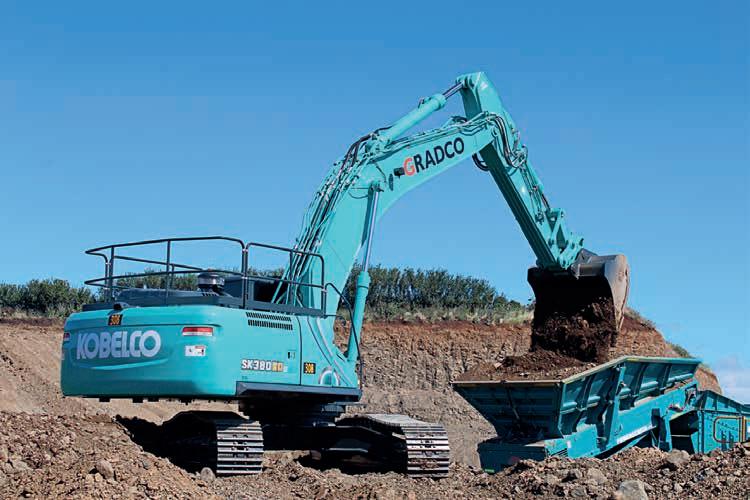
“Our decision to buy the SK500XD was
based on the acceptance of our first SK380XD and what a good machine it was. The operators love it. It is quiet and efficient. We also spoke to some other operators on the mainland that operate the SK500, and they gave very positive feedback, which confirmed our thoughts and led us to buying the machine,” Oliver said.
“The heavy-duty features of this machine, in addition to our close relationship with our local DLM Machinery dealer, prompted us to buy the bigger Kobelco,” he added.
David Morrison, director of the DLM Machinery dealership in Launceston, explained why the models were suitable for Gradco’s applications.
“Both the SK380XD and the SK500XD are part of Kobelco’s XD Series excavators, which feature a rugged machine body built with substantial additional reinforcements to all key areas of stress and wear across the boom, arm, underbody and undercarriage,” David explained.
“The specially adapted heavy-duty boom and arm set in the XD Series is built to last in the harshest of applications, and
36 Quarry March 2023
EXCAVATORS
Tasmanian company Gradco has two Kobelco SK380XD excavators in its fleet.
features factory fitted, triple-plated, hardened steel applied to all key structural sections, including the boom to arm connection, the boom centre and the end of the arm –providing high level of durability and longevity to the attachment structures.”
OPERATOR ACCEPTANCE
With Gradco on a fast growth trajectory as a company, Oliver said being recognised as an employer of choice was a point of pride for the company. This is a factor that also plays in when deciding to upgrade machinery, he explained.
“A major thing for our company is operators’ acceptance of the machinery. We strive to give our guys the best equipment to drive and operate that they enjoy driving, because they are the ones that sit in these machines all day,” he said.
“We have a very loyal team of people. Our longest standing excavator operator has worked with us for 44 years. In our company
culture, looking after each other is very important. We do our best to attract people to the business, but we do find that our guys stay onboard with us for a long time because of the equipment they get to operate, and because of the nature of our relationships as a family-owned business,” he said.
“Our people are very valuable to us, and we show them that we appreciate them.”
With this vision, Oliver said Gradco is continuously investing in new technologies to stay ahead of the game with productivity and efficiency.

“We have a continuous fleet upgrade
program, where we are taking delivery of new equipment into our business all the time. We are always ready to adopt new technology and give it a go, in the hope of giving ourselves a point of difference and making ourselves more competitive in the market,” said Oliver.
“We’ve had a fantastic run with our Kobelco machines over the years. They are well accepted in our fleet, alongside other major brands. Our local dealer always goes above and beyond to rectify any problems if they come around, and we’ll continue to buy Kobelco machines from them into the future.” •

BUILT TO CONNECT
With unmatched strength from rock to road, connection is at the heart of everything we do. At Astec, we design and manufacture products used to build the infrastructure that physically connects the world. But it’s the connections we make with people that drive us forward.

Our company was founded on innovation and we are committed to helping our customers succeed. Astec - we’re built to connect.
1300 278 322
enquires.australia@astecindustries.com astecindustries.com
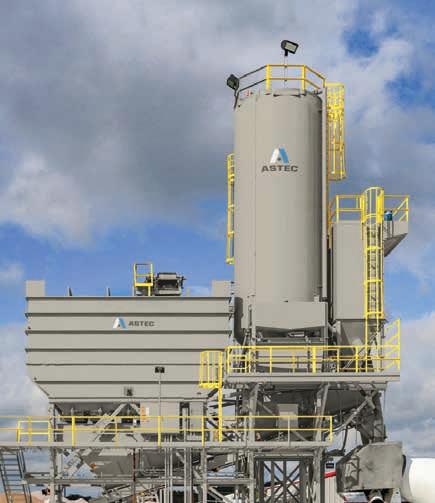 Operator comfort was a key factor for Gradco in choosing the SK380XD.
Operator comfort was a key factor for Gradco in choosing the SK380XD.
A WELL-REFINED SCREENING PROCESS
On the New South Wales south coast, Astec’s 2618VM high frequency screen is transforming crusher dust into manufactured sand.
Cleary Bros is a leading provider of construction industry services in the South Coast and Illawarra region of New South Wales. In 2021, the company was searching for a way to produce consistently high-grade manufactured sand at its Albion Park quarry south of Wollongong. An Astec 2618VM high frequency screen proved to be the right fit for the operation, enabling the company to repurpose crusher dust into high-quality manufactured sand.
BACKGROUND
Cleary Bros has long been a significant presence in the New South Wales construction services industry.
What began as a family-run timber mill in 1916 is now a multi-faceted company with over 200 employees.
Among its other operations, Cleary Bros runs a hard rock quarry at Albion Park and a sand extraction site near Gerroa, with the outputs from both delivering raw material for the company’s concrete batching plants in Bombaderry, Albion Park and Coniston. A fully integrated business, Cleary Bros
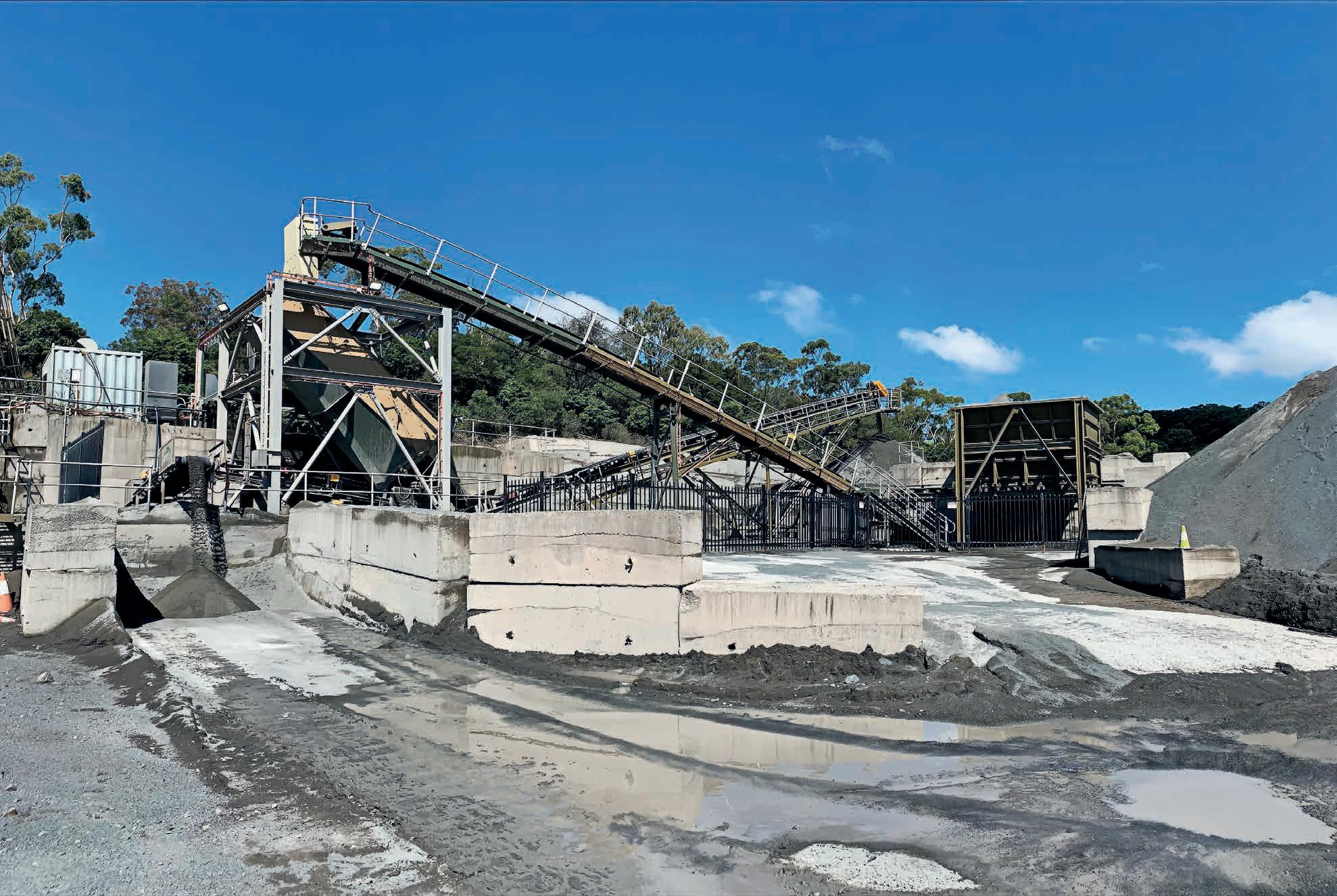
also provides transport, plant hire and construction services to its customers.
Cleary Bros’ relationship with Astec began in 2019 when the company replaced an ElJay 54 cone crusher with a new Kodiak K400+ cone crusher and surge pile pan feeder. The new equipment performed above expectations, and when the company wanted a high frequency screen to produce quality manufactured sand for its in-house concrete production, they again turned to Astec.
“We had visited another site that was using an Astec high frequency screen to produce manufactured sand from their crusher dust, and we were impressed with the screen’s capacity and the consistency of the product it was delivering,” Todd Kalajzich, Cleary Bros’ general manager of quarries explained.
Prior to the screening upgrade, Cleary Bros had incorporated an air classifier into its manufactured sand production process – a move that proved to be less successful than they’d hoped, according to Kalajzich.
“We introduced an air classifier into the process but soon realised there were going to be ongoing problems with moisture
levels in the crusher dust as well as with the management of air borne dust from the air classifier,” Kalajzich said. “So we had to find another solution.”
FINDING THE RIGHT SOLUTION
Matthew Bourke, Astec’s sales account manager for material solutions, worked closely with Cleary Bros on the upgrade project. He explains why the 2618VM high frequency screen was the right technology for the job.
“High frequency screens differ from conventional screens because the high frequency action is introduced directly into the screen media which allows for increased stratification and separation of material,” explained Bourke. “And that’s the key, particularly when you’re working with finer or wetter materials.
“Conventional inclined and horizontal screens vibrate on average between 675 and 1000 rotations per minute (rpm). Our variable speed high frequency screens like the 2618VM can vibrate up to 4200 rpm, which is perfect for screening those finer materials like crusher dust.”
38 Quarry March 2023
SCREENING
Astec’s 2618VM high frequency screen installed at Cleary Bros’ hard rock quarry at Albion Park, New South Wales.
According to Bourke, Astec’s high frequency screens are sought after in a range of other processing applications too, including recycling asphalt, glass and nickel slag.
“Depending on the properties of your resource, the removed fines can even be used as a natural fertiliser or recombined back into road base,” Bourke said.
“In this case, Astec’s high frequency screen technology is helping our customer modify the gradings of crusher dust to produce a highly valuable product which, in turn, reduces the demand for natural sand,” he added.
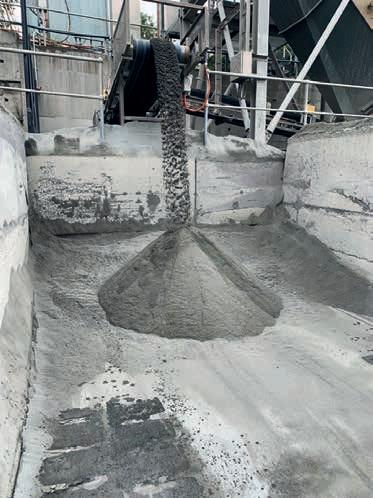
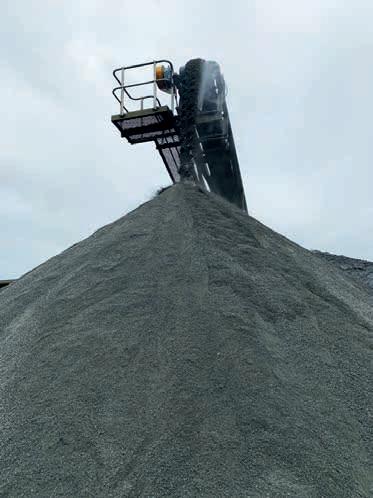
“It’s a win-win for everyone.”
On the Cleary Bros site at Albion Park, the Astec 2618VM is at the centre of a simple production circuit. The screen was purchased first, then Cleary Bros built a support structure, conveyors and product delivery bin.
“The design of Astec’s high frequency screens makes them easy to install and operate,” Bourke explained. “Because the vibration is isolated from the side sheets and applied directly into the screen media, there is no dynamic load on the support structure, so the structure required is much smaller than for conventional screens.”
The advantages don’t end there.
“The 2618VM is versatile and flexible,” Bourke added, “with multiple adjustments available to improve performance. These include screen angle, rpm and amplitude. And screen media changes can be made quickly and easily with our unique rotary tensioning system that utilises a winch and spring system.”
Astec’s range of high frequency screens includes both fixed and tracked options.
Cleary Bros’ 2618VM is a double deck six-feet by 18-feet high-frequency screen.
THE RESULT
According to Kalajzich, the Astec 2618VM has given Cleary Bros far greater control over the quality and consistency of the product.
“Moisture levels have a considerable impact on the process, and now we’re able to adjust the rpm and inclination to account for those,” he said.
Maintaining that consistency is key to Cleary Bros’ operations, Kalajzich added.
“Stringent specifications for manufactured sands require continual testing and management of our 75-micron content to ensure we produce consistently compliant
material, and with the 2618VM we can do just that.”
According to Kalajzich, upgrading to the Kodiak 400+ crusher and installing the Astec high frequency screen enabled the company to improve the quality of its concrete.
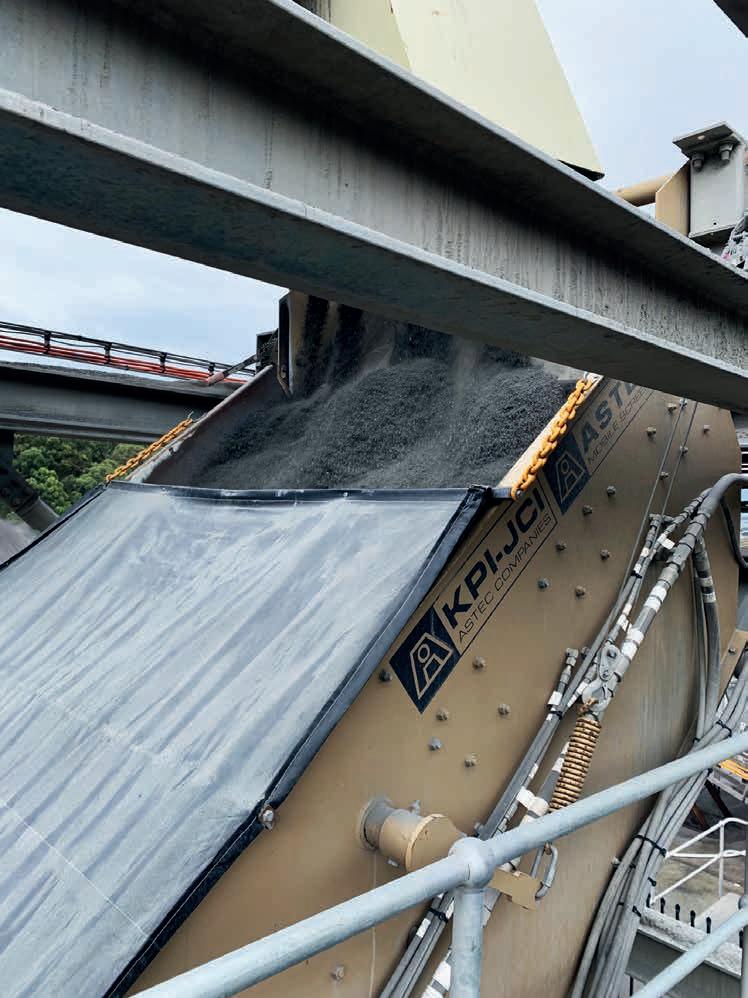
“Our aggregate shape and yields improved with the introduction of the Kodiak K400+ cone crusher, and that has many benefits down the line, particularly in terms of concrete strength. And with the new 2618VM high frequency screen, we now have a reliable supply of compliant manufactured sand. Both are proving to be important factors in our ongoing success,” he said.
Like other quarries on the South Coast, Cleary Bros has had to navigate local and global challenges in recent years. From bushfires in late 2019, through the long uncertainly of the Covid pandemic, to months of continuous wet weather, it’s been a difficult period for any business to negotiate.

However, as Kalajzich explained, the company has been able to adapt and maintain a pipeline of both supply agreements and construction works by being “innovative and flexible,” and Astec has been a big part of that.
“We have a great relationship with Astec. They’re always available and their ongoing support has been excellent. We’re delighted with their products – they’re well designed, robust and reliable. Exactly what you need in the quarrying environment.” •
Quarry March 2023 39
Cleary Bros can produce consistent quality manufactured sand (left) and under 75-micron product (right).
Using the Astec 2618VM screen, Cleary Bros repurposes crusher dust into high-quality manufactured sand.
NEW LEADER FOR SAFETY AND SUSTAINABILITY
Newly appointed as manager for safety and sustainability for Komatsu, Henrietta Jukes is pioneering a new role for the company as the point of call for increasing the safety and sustainability outcomes for Komatsu customers and employees.

Jukes will work with the executive team to lead safety and Environmental, Social and Governance (ESG) strategy initiatives and achieve Komatsu’s strategic goals in these areas. Komatsu’s national safety team will report directly to Jukes, with a core focus on elevating their safety initiatives to beyond an industry best practice level.
Jukes brings with her a wealth of experience, having worked at Westside Corporation, ERM Australia and GHD in Australia, plus some time in Abu Dhabi with GHD. She has a Bachelor of Geography and Environmental Science (Hons), Post Graduate Diploma in Environmental Management and Post Graduate Certificate in Occupational Hygiene. Quarry had the chance to speak with Jukes regarding her appointment and how the role will serve to benefit the quarrying industry and the wider resources sector.
What is your previous experience in a position such as this?
I started my early career in environmental science and have worked largely in consulting, where that experience has taken me to and across many industries. Whilst this is my first industry role in heavy machinery, I have worked in the industry before from a consulting perspective, assisting businesses with their ESG strategies, environmental strategies and particularly safety strategies.
Can you highlight the importance of your role in a world where evidence-based data and reporting is key to achieving sustainable outcomes?
You can’t manage what you aren’t measuring, so ensuringthat the right protocols are set up to monitor, measure and report on
a regular basis is key to managing your sustainability pillars. I think Komatsu are very forward looking in appointing this role, as it shows clear understanding that having a credible and experienced person to coordinate and facilitate the many ESG projects in the business will ensure the best possible outcomes for the environment and the communities that we work in. Evidence based data and reporting this data in a consistent way using the right tools will ensure we can monitor and track progress. The targets we have set are important but ensuring the pathway to meeting the targets is practical is also vital. With the use of modern technology, in the form of telemetry and artificial intelligence – which grant live data on the condition and operation of the equipment - we have the tools to reach meet these targets.
With your background in workplace hygiene, are there particular areas of safety which you are looking at as key concerns within the quarrying industry? At Komatsu Australia our safety focus in this industry is a multifaceted, including ensuring that our service and maintenance staff are assessing and controlling hazards such as people plant separation, heat stress, musculoskeletal, and pinch point hazards. We also monitor exposures to occupational noise, vibration, and hazardous substances. From a corporate perceptive the safety in design of our equipment is constantly evolving and improving to ensure owning and operating Komatsu equipment is contributing to overall safety of the quarry. Using technology to improve operator visibility and awareness of their surroundings, using human factor research in the design of the controls, gauges and screens, to designing and manufacturing equipment and their components to ensure they can be accessed and serviced in a safer manner. In the future increased robotics and automation will reduce the need for people to be put ‘in-theline-of-fire’ or hazardous situations.
What overarching sustainability goals does Komatsu have at a global level?

We have some very stringent goals that are part of Komatsu’s global priorities. We have a very detailed and defined set of key performance indicators and targets for 2024 and one of those targets includes reducing our Scope-3 emissions by 45 per cent. This is a big ask, considering many businesses in the industry across Australia are not looking at their Scope-3 emissions in the same way. In terms of our emissions, 97 per cent of our emissions are Scope-3, so we are focusing on that and focusing on partnerships with our suppliers and our customers to make sure we can work together for reductions in emissions, energy consumption, waste and water consumption. Importantly, to facilitate this reduction, Komatsu has undertaken a materiality assessment to ensure our focus is on meaningful environmental, social and governance areas to the business. We are in the process of developing a detailed sustainability framework that will guide the business towards net zero in 2050 and assist in meeting other ESG targets along the way.
What plans are in place to continually improve ESG targets within the industry?
Globally Komatsu has a detailed and defined set of KPI’s and targets that have been shared and communicated with all its entities. Komatsu Australia is on the sustainability journey and is currently transitioning the business under three key themes – Community Member, Solutions Partner and Future Company. Evidence
40 Quarry March 2023 STRATEGY
Quarry sits down with Henrietta Jukes, Komatsu Australia’s new manager for safety and sustainability.
Henrietta Jukes has joined Komatsu Australia as manager for safety and sustainability.
based data and reporting this data in a consistent way using the right tools will ensure we can monitor and track progress. The targets we have set are important but ensuring the pathway to meeting the targets is practical and realistic is also vital. For the quarrying industry to continue achieving sustainability targets, the sector should continue developing and utilising measures such as recycling material that isn’t used for its initial purpose, putting in place actionable life cycle plans for the quarries and looking at electrification or other efficient fuel types for equipment onsite.
Is there anything you would like to share about the role that you are excited about?
Being the first GM for Safety and Sustainability for Komatsu Australia gives me an exciting opportunity to drive innovation, research and improvements.
It’s an important time for things such as electrification, with alternative sources of fuels like hydrogen, synthetic diesel and
biofuels to reduce the emissions of operating heavy equipment available, so being able to work to incorporate that technology into businesses is vitally important.

We are working on continuous improvement around safety and making sure that that we’re working closely with industry partners for the best outcomes for both people and the environment. Of course, we already have a great safety team in place, and they’ve been doing so many great things over the last few years. Our lost time injury rate is about half of the industry standard, so whilst there’s always room for continuous improvement, I’m very comfortable with the way the business operates from a safety perspective. We’re on a journey with sustainability and I am very excited to come in at this point. There are so many wonderful things that come out of what we’re doing for the national industries of quarrying, mining and construction. For my role, to bring this all together, and to ensure that we are utilising the projects that are being done in certain
areas across the business, is really important. Komatsu Australia has shown its commitment to sustainability by creating this role and I look forward to contributing in this exciting time of change and leading the development of innovative and new solutions towards the opportunities we have in sustainability.
How important is diversity within the industry and how is Komatsu working to foster this?
There’s a strong focus from Komatsu on diversity at the moment, in both gender diversity and diversity of people from different walks of life. We do have targets around gender diversity and those are being met. This year, almost 50 per cent of our apprentices in the new apprenticeship program are female and our focus is on making sure we support them and keep them engaged in the workforce. We are a flexible workplace and a workplace that welcomes women and people from around the world and we really have a focus on developing that further. •
• Installation, servicing and calibration Australia-wide • Loader, excavator and other industrial on-board weighing systems • Mine spec vehicle capability • Weighbridge recalibration and verification in QLD only 1300 867 266 • www.positionpartners.com.au Loader scales due for calibration? Book a service for your on-board scales today with Position Partners’ new fleet of service trucks.
A LOAD OF NEW FEATURES INCLUDED IN VOLVO LOADER
Boasting an impressive suite of features that cater towards an improved operator experience and higher savings, the L260H is the latest offering from Volvo to be supplied to the Australian market by CJD Equipment.
Unique working conditions in the quarrying industry require machines which are capable of going above and beyond.
This is where the L260H from Volvo shines. Building upon the success of the previous L250H model, the newer loader has enhancements in multiple areas.
Speaking on the new features of the L260H and their applications for operators on site, national product manager for CJD Equipment, Hayden Grant, said that the total cost of ownership for a high performing loader was one of the biggest selling points for the L260H.

“The L260H is the ideal production loader for all applications, from load and carry to moving quarried material,” Grant said.
“Its ability to move tonnes per hour, with more tonnes per litre of fuel burnt make it a fantastic piece of machinery in terms of efficiency and sustainability.”
NEXT GENERATION LOAD SENSING TECHNOLOGY
Next Generation Load Sensing technology is a unique feature of the L260H that helps it to stand out in the market. According to Grant, this technology allows the regeneration of the hydraulic oil from one side of the cylinder
to the other, with minimal effort.
“The load sensing technology redistributes the hydraulic oil with no pump pressure and with no load on the engine, so no fuel is burnt,” he said. “This also improves controllability and makes the machine operation smoother.”
The feature has the potential to pass on significant fuel cost savings through the function of the hydraulic technology.
“This reduction in cycle times results in more tonnes per litre of fuel burnt, not only for the L260H, but also for any vehicle it is loading into,” Grant said.
With the additional on-board weighing option, operators can know the current load in the bucket and exactly how much has been unloaded for the current task, whether that be loading a truck or stockpile.
VOLVO SITE SIMULATION
Volvo Site Simulation provides insight into fleet choices and site configuration, allowing more visibility in choosing the optimal options to increase the efficacy of operations.
“The Volvo Site Simulation is a great tool for all Volvo products,” Grant said, “the customer can map out the site and drill down on where efficiencies can be improved. It also makes it easy to identify areas where they are not
performing as efficiently as they could be.”
Volvo Site Simulation can be assisted and further improved with other options available, including connected maps, operator coaching and productivity services. These options help to save both fuel and wear on the machine, and maintain the value of the loader over time.

“Optional real-time operator coaching is provided directly to the operators in the cab, giving them tips on the best operating practices. For example, they might need assistance on using the lock up option, positioning the throttle or the use of kickdown in the first gear,” Grant said.
TECHNOLOGICAL ADVANTAGES
The L260H offers improvements over the previous L250H model, that particularly in quarry operations.
Responsiveness is one aspect which Volvo has improved upon, with a focus on enhancing the operator experience, as Grant explained.
“The increased responsiveness delivers an improved fuel burn, enhanced comfort in the cab, faster cycle times, and the ability to adjust the responsiveness from the dash as required,” Grant said.
“It’s a great tool when you have an operator
42 Quarry March 2023
LOADERS
Volvo’s new L260H loader is the ideal production loader for all applications.
that’s not familiar with the L260H, or who has a task where more finesse is required.”
Featuring a new transmission with Opti Shift and Reverse by Braking (RBB) function has also been built into the new design, which further reduces fuel burn and cycle times in load and carry scenarios.
When working with the automatic lockup clutch and the RBB function, the brakes apply on a direction change, engaging the opposite gear when it’s safe to do so. This results in the system protecting the drive line and transmission whilst reducing the overall wear on the components.
To keep the operator within the optimal revolutions per minute (RPM) range, the loader has an eco-pedal included. This, according to Grant, contributes to reducing the machine’s total cost of ownership.
“It’s a simple thing, but it’s highly effective,” he said, “The eco pedal encourages economical operation by applying a mechanical push-back force in response to excess use of the accelerator.”
This immediate feedback direct to the

operator can also help to facilitate better driving habits to reduce fuel use over time.
SERVICE
With a focus on providing high levels of service to ensure the best experience and highest productivity from the end user, CJD Equipment spares no expense when it comes to equipment the company supply. CJD operates 20 branches across Australia with over 100 field service staff and 150 workshop staff.
The company also has an additional 15 resident field service technicians and over 20 product support and aftersales support staff to support customers nationally. Additionally, CJD offers an afterhours call out service that is available 24 hours, seven days a week. •
The L260H is available for purchase across Australia. To enquire about stock or the range of additional add-on options for the new loader, please contact your local CJD Equipment branch.


0409 847 079 daisy@rostrevorgroup.com.au SAFE & RELIABLE CRUSHING AND SCREENING Rostrevor Group, established in 2019, to service the recycling and Quarry industry with crushing and screening services. • Modern fleet of Crusher, Screens & Excavators • Highly skilled team of employee and contractors
A new transmission with Opti shift and reverse by braking function reduces fuel burn and cycle times.
RETHINKING CEMENT
Contributing roughly eight per cent of carbon emissions worldwide, cement and concrete iare essential for modern living but have historically been damaging to the environment.
Concrete, cement and other limestone products are formed through the heating of cement meal and other applicable aggregates.
To focus on the reduction of carbon dioxide (CO2) that is inevitably produced from the production of cement, Calix formed Leilac (Low Emissions Intensity Lime and Cement) to spread leading edge carbon capture technology worldwide.
The Leilac technology is being piloted with the world’s largest cement and lime companies, such as Adbri, Boral, Heidelberg Materials and Cemex, to mitigate their CO2 emissions dramatically, without significant use of energy or capital penalty.
Leilac chief executive officer Daniel Rennie explained to Quarry the benefits of the Leilac technology when it comes to carbon capture.
“Leilac was born from environmental technology company, Calix, who established global partnerships across industry, academia and government to develop this unique technology for the decarbonisation of cement and lime,” Rennie said.
The process to create cement requires heat to break apart the limestone and combine the crushed components of cement, which releases unavoidable CO2 emissions as part of the reaction.
Employing a unique carbon capture utilisation and storage (CCUS) approach that involves indirect heating allows Leilac to separate the product that is heated from the source that heats it.
“Our indirect heating approach uses a module of steel tubes to deliver radiative heat to limestone or cement meal,” Rennie said.
“By separating what we heat from how we heat it, the process emissions are largely pure CO2, as they remain uncontaminated by air or heating gases. Therefore, it does not require
a conventional, energy intensive process of separating gases from gases.
The result is a highly efficient, low cost solution, for the separation of process emissions as high purity CO2 ready for compression, transport or storage.
Leilac’s technology replaces part of the existing cement plant, rather than adding an additional process, which ensures that there are no additional chemicals or processes.

The Leilac technology can be retrofitted and integrated to an operational plant with minimal disruption.
There are two distinct types of emissions that are part of cement and lime decarbonisation: the process emissions that are unavoidably created when processing the limestone and cement meal, and the energy emissions that come from heating the limestone and cement meal.
One of the strengths of Leilac’s technology is its ability to be used in multiple settings.
“Leilac’s technology is designed to be energy agnostic and electrification ready,”
Rennie said. “We are working on flexible and economical solutions to decarbonise energy consumption in the industry. These solutions will include the use of low-cost alternative fuels, renewable electricity or green hydrogen for carbon neutral cement and lime.
“Leilac’s technology has the potential for strong synergies with other capture technologies that can capture fuel emissions. The combination has the potential for creating the lowest cost route to carbon negative cement and lime.”
Traditional carbon capture technologies can employ sorbents or other chemical applications to absorb CO2 released from the process of cement creation.
However, these approaches require additional energy, which call for emitters to account for any carbon emissions that occur from the use of additional energy, as Rennie explained.
In contrast, the CCUS approach from Leilac is a novel approach as it re-engineers an existing process to optimise and draw as
44 Quarry March 2023
SUSTAINABILITY
Redefining how concrete is manufactured, Calix has pioneered a new approach to concrete creation with the Leilac technology to enable businesses to reach net zero targets. Lewis Cross writes.
The Leilac project is working in conjunction with technology from Calix on leading edge carbon capture technology.
much benefit with as little penalty to energy usage as possible.
“Leilac’s approach is different. We simply re-engineer the process flows of a traditional calciner to separate high purity CO2 from limestone, with minimal energy penalty.”
One of Leilac’s partners currently undertaking engineering studies to install the Leilac technology is Adbri.
A spokesperson from Adbri highlighted the importance of CCUS solutions in a 2022 announcement of the partnership released by Calix.
“As a leading Australian producer of lime aspiring to be net zero by 2050, we recognise it is a difficult manufacturing process to abate,” Adbri said.
“Transformative technology-led partnerships like this one with Calix form a key part of our own pathway to net zero by 2050, reducing our emissions profile while supporting the decarbonisation of our end-market customers.”
The benefits for this style of CCUS technology is appealing, not just from an emissions reduction standpoint, but also from a financial standpoint.
This is particularly the case where policy settings incentivise CO2 abatement, such as in the “EU ETS and CBAM policies, the US Inflation Reduction Act’s changes to Q45, and the announced changes to the Safeguard Mechanism being discussed in Australia,” as Rennie said.
ENVIRONMENTAL CONCERNS
With the global use of cement being essential to modern society, considerations need to be made on the environmental impact it has worldwide.
Cement is the key ingredient in concrete and is the second most consumed substance on Earth, after water. It provides the foundations of modern society and economies as it is found in almost all buildings and infrastructure.
In a similar vein, lime is a key material for many industries, including steel, paper and water.
However, the production of cement comes bundled with a high amount of CO2 emissions, that are unavoidable when processing limestone and contribute to climate change.
Ensuring the production methods for cement are sustainable and low-cost for the future, Rennie said that “Leilac is working urgently with industry to develop and provide solutions”.
production methods. The cement and lime industries provide an essential, low cost, accessible product that forms the foundation of our society,” Rennie said.
“Additionally, the unique properties of cement make it a durable, high-performance material that will likely be essential for sustainable and climate resilient buildings and infrastructure.”
The main identifiable downside to this is the carbon intensity of traditional production methods, specifically the unavoidable release of CO2 when processing limestone.
“As the global population heads towards 10 billion and becomes increasingly urbanised, it is essential that everyone can continue to benefit from available, low-cost and sustainable cement and lime. We must ensure that the just transition to a net zero economy balances social, economic and environmental sustainability.”
“As noted by the Intergovernmental Panel on Climate Change (IPCC), CCUS plays a major role in decarbonising the industry sector in the context of 1.5°C and 2°C pathways, especially in industries with higher process emissions, such as cement.”
FUTURE-PROOFING THE QUARRYING AND AGGREGATES INDUSTRY
There is increasing pressure on all fronts for sustainable outcomes from industries, which currently already affects the quarrying and aggregates industry.
these industries may face further difficulties.
The Global Cement and Concrete Association (GCCA) predicts that even with significant savings from more efficient design and construction, as well as less carbon intensive cement and concrete production, CCUS will still be the dominant source of emissions reduction required for the industry to reach net zero.
“This is due to the inherently carbon intensive process of cement production,” Rennie said, “where between 60-100 per cent of total CO2 emissions are released unavoidably from the processing of limestone.
“For these emissions, carbon capture, utilisation or storage is essentially the only solution.”
To avoid significant disruptions to the industries that use cement in their applications, industry standard cement such as Portland Cement, which is the backbone of the construction industry needs to be able to be made sustainably to avoid disruptions.

Looking towards containing emissions at the point of creation is paramount. With current global targets and obligations in place, attempting to capture the released emissions would be substantially less efficient.
“Even when we account for all other carbon saving measures, it is estimated that to reach net zero, 1.4 billion tonnes of CO2 will need to be captured from cement each year by 2050,” Rennie said.
Quarry March 2023 45
“If the industry was to be unsuccessful in its decarbonisation efforts, and we – as a society – want to achieve our climate goals, then that 1.4 billion tonnes of CO2 will need to be captured and stored from the air. This would be a considerably less efficient and more costly option than capturing it at the source from the production plant.”
Recognising the need for these targets and understanding that they are unlikely to change is important for business moving forward, to ensure that they can get ahead of emissions regulation that might otherwise impact their business.
RECARBONATION
Though CCUS methods are the best way identified to reduce emissions from cement production, thought has been given to utilising low carbon alternatives in the formation of cement and looking at the reabsorption of CO2 in the air by concrete.
Though CO2 is reabsorbed and held by cement and concrete over time, in a process known as recarbonation, the GCCA estimates that “recarbonation will only account for around six per cent of the industry’s emissions by 2050”, according to Rennie.
“The recarbonation of CO2 to cement and concrete, over time, is a useful property of the material,” Rennie said. “Particularly if we can reduce the carbon intensity of its initial production.”
“Supplementary cement materials, including clinker substitutes such as calcined clay, offer potential low carbon alternatives. When used in blends such as LC3 cements, the resulting
products can exhibit properties similar to that of Portland Cement.
“We are able – with the same underlying technology – to produce such substitutes cost efficiently, and it is an area that we are actively developing,” Rennie said.
Utilisations of lower carbon alternatives is an attractive solution, but one that is not going to address the larger problem.
“Substitutes, however, are likely to only get us so far on the journey to net zero, with the GCCA anticipating that they will contribute only nine per cent of the emissions reductions required by 2050.”
“Leilac believes that the efficient, lowcost capture of unavoidable emissions from limestone will be essential to enabling sustainable cement and lime in a carbon neutral world.”
Employing CCUS in conjunction with lowcarbon cement material alternatives may be the best way for the industry to move forward to a sustainable and reliable future of cement production.
SCALABILITY OF CCUS
A primary issue that exists within CCUS technology is the requirement for another system to contain the emitted CO2, which typically require emissions to be created, and diminishes the impact on capturing the emitted carbon from the process of cement creation.
The Leilac technology innovates within its field, exploring the possibility of no energy penalty when compared with existing production methods.
“Efficiency is at the heart of the Leilac technology,” Rennie said. “Our process modification approach has, in theory, no energy penalty compared with existing production methods.
“Even when retrofitted to an operational cement plant, the energy penalty is expected to be minimal. This efficiency is enabling us to develop the potentially lowest cost carbon abatement solution for the industry.”
The energy penalty is a significant factor of the success observed with the Leilac CCUS, as when renewable energy becomes more widely used and accessible for industrial applications, emissions can be then further reduced.
“The minimal energy penalty of the technology also means that, unlike other capture solutions that require significant energy to power additional processes, the technology can simply and economically scale to capture 100 per cent of the process emissions from any plant,” Rennie said.
“Our pilot plant, Leilac-1, located at the Heidelberg Materials plant in Lixhe, Belgium, consists of a single steel tube capable of capturing 25,000 tonnes per annum of CO2, or five per cent of a typical cement plant’s throughput.

“Leilac-2, our demonstration scale plant, will be retrofitted to Heidelberg Materials’ operational plant in Hanover, Germany.
With a target CO2 capture capacity of 100,00 tonnes per annum, or 20 per cent of a typical cement plant, Leilac-2 aims to develop a replicable modular array of steel tubes that can then be multiplied to a full-scale, lowcost commercial CO2 abatement solution at any scale – for eventual deployment and construction by local firms using design blueprints.”
“In support of this, engineering is already occurring (with multiple clients across the world) to understand how this design could be applied to capture all the unavoidable process emissions from a variety of different plants.”
The retrofit capability of the Leilac plants is a major strength of the CCUS, as it enables businesses to capture emissions, without large restructuring needed on behalf of the owners and operators of the plant.
ADOPTION OF CCUS
Active adoption and use of CCUS is important for the industry, because this technology is being designed in conjunction with cement production facilities.
46 Quarry March 2023 SUSTAINABILITY
Leilac-1, at the Heidelberg Materials plant in Belgium, is capable of capturing 25,000 tonnes of CO2 per annum.
GCCA member companies are responsible for 40 per cent of global cement production and have collectively set a target for net zero emissions by 2050, mirroring global commitments under the Paris Agreement.
The sooner companies can adopt CCUS solutions, the quicker those emissions targets can be met, for a lower overall cost to business.
“With cement being responsible for around eight per cent of global CO2 emissions,” Rennie said, “every single method, technology and means of reducing our emissions needs to be pursued as quickly and as thoroughly as possible.”
“We believe that Leilac has reimagined carbon capture. Our technology is purpose built for – and in active collaboration with – the cement and lime industries.
“It is not a legacy technology developed for another industry, but instead uses a first principles approach to develop the most efficient capture solution for unavoidable process emissions.”
The technology Calix developed is technology which has been expressly designed for the carbon capture of emissions from cement production.
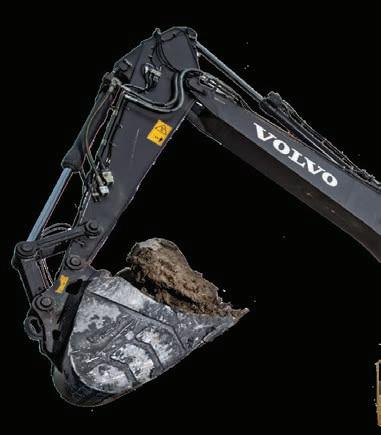
Businesses have the chance to develop and aid in lowering emissions in an active way, by taking part and adopting these CCUS options for their operations.
“Leilac’s flexibility on fuel sources provides pathways to carbon neutral and even carbon negative cement and lime. It aims to future-proof production methods as we transition towards electrification and renewable energy. As such, we are doing everything that we can to work with industrial players, and collaboratively enable an efficient and compelling case for carboncapture at all sites globally.”
FUTURE OUTLOOK
Carbon capture technology – such as CCUS –is an important component of the quarrying and aggregates industry moving forward. Both as suppliers of limestone and other
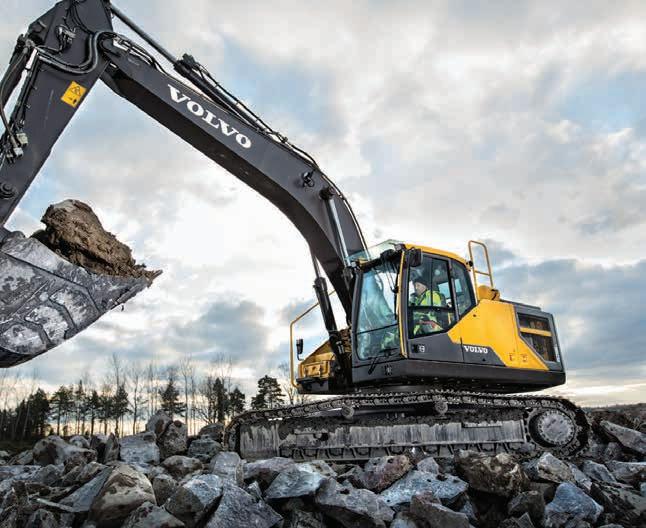
materials used to create concrete and operations that produce concrete, looking to methods that lower emissions in line with global CO2 reduction goals is essential for the longevity of the industry.
The Leilac technology, developed by Calix, is a solution which is tooled to provide lower emissions as the need to decarbonise intensifies and the future of renewable energy continues to advance.
“The Leilac technology’s optionality on fuel source and its potential for grid load balancing in an increasingly renewably powered energy grid, offers a future proof solution for the industry,” Rennie said.
“As penalties for emitters increase across the world, decarbonising is not only a matter of environmental responsibility for producers: it is a matter of survival.
“Affordable CO2 abatement solutions will enable producers to take urgent action against climate change and protect their industries’ jobs and prosperity.” •
Purchase a new Volvo 14 - 35 tonne excavator before 30 September* and receive additional extras: & with 14T - 35T volvo Excavators* WARRANTY EXTENDED 3-YEAR/6000 HOUR attachment $6,000 Off your volvo genuine BIG ENOUGH TO TRUST SMALL ENOUGH TO CARE cjd.com.au | 1300 139 804 | enquiries@cjd.com.au Bonus upgrade to 3 year/6000 hour warranty and bonus $6000 towards a Volvo Genuine Attachment offer is valid for every new 14-30 tonne Volvo excavator purchased between 1st January 2023 and 30th September 2023. Offer available on Volvo excavator models EC140D, EC140EL, ECR145EL/ELD, EC200EL, EC200D, EC220D, EC220EL/ELD, ECR235EL/ELD, EC250D, EC250EL/ELD, EC300D, EC300EL/ELD, EC350D, EC350E, ECR355E (excludes Volvo wheeled excavators). Machine must be delivered by 31st of December 2023. Warranty is valid on component only. The warranty is limited to three years or 6000 operating hours, whichever occurs first, commencing from the date of delivery. Normal manufacturer’s warranty terms and conditions apply. Images are for illustration purposes only. CJD Equipment reserves the right to withdraw this offer at any time without notice. Contact your local Branch for more information DOUBLe EXTRAS the
IMPROVING SUSTAINABILITY, ONE STEP AT A TIME
Quarry sustainability improvement is a hot topic these days and one that is getting a lot of attention from different quarters, but what does it mean in practice?
Eltirus founder Steve Franklin writes.
If we want to improve the sustainability of our quarry operations, there are a number of approaches that we can take. The ultimate goal is decarbonation of the industry, which may be achieved through the use of equipment powered by electricity or perhaps hydrogen. But frankly, this is a big step and one that is going to take quite some work to achieve. This said, there is a lot we can do to improve the sustainability of quarry operations before we reach that point.
Given every litre of diesel that is burned releases 2.68 kilograms of carbon-dioxide (CO2), it stands to reason that doing everything we can to reduce fuel burn not only improves sustainability outcomes but also reduces fuel and maintenance bills. So how can we do this?
• Use the most fuel-efficient diesel machines possible.
• Use diesel equipment effectively.
• Adopt electric or hydrogen equipment.
USE THE MOST FUEL-EFFICIENT DIESEL MACHINES POSSIBLE
The fuel efficiency of modern diesel equipment is substantially higher than it was in the past. For example, if we refer to Caterpillar Performance Handbook #27 and compare the fuel burn of a 775D and the current 775G in Caterpillar Performance Handbook #49 (approx. 22 years later), we see that the medium duty cycle fuel consumption has dropped from 50 litres per hour (l/hr) to 32 l/hr (and the truck is substantially more productive). This is a huge change.
If – for easy maths – we use a 2000 hours per year operating time, we see that upgrading to a modern truck fleet would save us 36,000 litres of diesel, or approximately $65,000 (assuming diesel cost of $1.75 per litre and 96 tonnes of CO2 emissions per truck per year. By the time you add up similar savings across the drill, load and haul and sales loader fleet, the savings can add up to substantial sums of money.
As mentioned earlier, not only are there fuel savings, but there are also substantial maintenance cost savings that accrue from current generation equipment, not to mention significant improvements in operator safety/ comfort and environmental performance as well.
USE DIESEL EQUIPMENT EFFECTIVELY
There are factors that drive up the cost of using diesel powered (or any) equipment –these include:
• Excessive idling
• Low duty cycle usage
• Incorrect fleet matching
• Excessive handling of material through poor planning
• “Busy work”
Let’s look at these one by one to get a sense of what we can do to improve performance in each area.

EXCESSIVE IDLING
What do I mean by excessive idling and how can we identify it? Idle time beyond 20 per cent is likely excessive. In a Caterpillar document called “How much is idle time costing you?” the author noted, “Some industry experts say that it’s not unusual
for idle time to represent 40-50 per cent of total running time.” Do you have a way of measuring idle time across your fleet? Do you use it to drive change?
One cost effective method that can be used to identify idle time loss is the Propeller Dirtmate system, which provides a simple way to track when your equipment is working and when it isn’t.
Regardless of how you identify it, excessive idling does occur (machine left running on the go-line, idling through breaks to run the heater or air conditioning, etc.) and the correct identification and minimisation of it will improve your sustainability outcomes and reduce costs.
LOW DUTY CYCLE USAGE
The duty cycle is a measure of how hard a machine is working based on the fuel consumption. As you can imagine, this can vary depending upon the application – think a haul truck running on a flat haulroad versus one hauling out of a deep pit. But it can also tell us a lot about how effectively the machine is being utilised. If we go back to the Caterpillar Performance Handbook #49 and look up a 390F excavator, we see that the fuel burn can
48 Quarry March 2023 SUSTAINABILITY
Example of DirtMate equipment utilisation reporting.
vary from 21 l/hr to 61 l/hr. If you keep accurate fuel records and you see this type of machine regularly using say 22 l/hr, you can tell that it is likely not working hard and is spending most of its time idling. Likewise, if it is recording 80 l/hr on a consistent basis, you probably know the fuel allocations are wrong or perhaps you are “losing” diesel. Either way, checking actual fuel burn against manufacture duty cycle estimates can tell you a lot about how effectively your equipment is being used.
INCORRECT FLEET MATCHING
Two things tend to occur in relation to fleet matching – the first is that machines are getting bigger and unless the downstream capacity increases too, they mismatch. You can be sure that a site will always want a bigger machine than the one they have. Not only do current generation machines have significantly better fuel efficiency, but they have also grown in size. By way of example, a 988B (1987) weighed 43 tonnes and had a bucket capacity of 5.4 cubic metres (m3). A 988K XE (2022) weighs 53 tonnes and has a bucket capacity of say 6.9 m3 – clearly a much larger (and more capable) machine.
Secondly, quarries tend to run much larger loading tools at the face than are needed, often resulting in poor utilisation. This is particularly the case where wheel loaders are used.
To reduce manning numbers, larger trucks are used, and this drives the need for larger loading tools to be able to reach over the side of the truck and load them.
Where possible, take the time to match your fleet to the job. The equipment dealers are generally very good at being able to conduct studies on fleet composition and matching – take their advice. By way of one example, a site I worked with many years ago was able to move from a WA900-3 down to a 990K wheel loader with no loss of productivity and substantial savings.
EXCESSIVE HANDLING OF MATERIAL THROUGH POOR PLANNING
It’s easy to observe excessive double handling of material, particularly around the plant. Once identified, it can often be reduced through changes in fixed plant configuration including bins, extra conveyors, etc.
Where we see the biggest wins are in an area that is much less obvious: quarry extraction planning.
Our experience is that quarry extraction is rarely optimised or scheduled. Through a good understanding of the site geology, market and costs, you can optimise the deposit to maximise net present value (NPV) by extracting only material that is truly valuable and in the correct sequence. Both failing to strip early enough, or too early, you destroy value and increase equipment use and emissions.
I can’t stress how important it is to have a clear idea of your deposit and a plan to extract it effectively.
For anything other than the simplest of operations, optimisation and scheduling are not luxuries, they are vital to shareholder value and take increasing care of the environment.
“BUSY WORK”
Early in my career, I spent time as a machine operator. The company I worked for fitted all their machines with what was known as a “Kienzle clock”, which recorded when the machine was moving and when it was not. Each week, our supervisor would show us the card and identify whether we were meeting his expectations. These were not always happy conversations.
The concept was good – they wanted to ensure that we were working without supervision, though you might also guess that given we were given a lot of trouble about being idle, “busy work” could occur to fiddle the result.
The point I am making is that you can do a lot of record keeping and analysis and
pushing of the team to achieve your target metrics, but unless the results are towards a positive end, it can be perceived as more a PR exercise than of value – keep it real.
ADOPT ELECTRIC OR HYDROGEN EQUIPMENT
Ultimately, we will see electric, and hydrogen powered equipment (and most likely other technologies not yet envisaged). Good examples of this are the Volvo TA15 electric truck and more recently the Cat battery powered 793 (though it’s a little too big for your average quarry.) This said, we have quite a way to go to achieve this change.
Even if electric trucks are available, the installation of the power infrastructure required to charge them – not to mention the local storage needed to smooth out the charging cycle – will be substantial.
Hydrogen powered equipment will face similar challenges until the infrastructure exists for it to be safe and viable.

This might look challenging, but if we cast our attention back even one hundred years ago, you would see that obtaining petrol and diesel was nowhere near as simple or straightforward as it is now. Demand will drive infrastructure and cost reduction.
SUMMARY
The road to decarbonisation in the quarry industry will likely not be short, if for no other reason than companies will tend to adopt new technologies only once proven and in line with fleet replacement strategies. The important thing is to start planning for it.
In the meantime, maximise the potential of the equipment you use now and do everything to use it more sustainably. A primary step to doing this will be to accurately record diesel usage per tonne of material produced and work to drive that value down through effective management of natural resources and equipment. The best part of this is that it is good for the bottom line and the environment. Let’s do it! •
Quarry March 2023 49
Caterpillar solar panels supporting its first battery electric 793 large mining truck prototype.
DELTA GROUP SHINING A LIGHT TO BRING A ‘FLICKER OF HOPE’

Supporting research into neurofibromatosis, the team from Delta Rent shares its experiences in launching the Flicker of Hope Foundation.
In 2017, Con Petropoulos, founder and managing director of Delta Group, along with his wife Anne, waited for their 16-year-old daughter Zoe to come out of surgery for a rare genetic disorder.
Zoe, who has the genetic disorder neurofibromatosis (NF), had just had a tumour the size of a golf ball removed from her sinus cavity for the second time. It’s a journey the family had travelled before, with no end in sight.
Whenever they asked doctors about what the future might hold for Zoe, the constant reply was “we just don’t know – the research hasn’t been done”.
That evening, Anne turned to Con and said “this is crazy, we could be doing this for the rest of our lives – we need to get some research done into this condition”.
This conversation led Con, Anne and their family to launch the Flicker of Hope Foundation in 2018. Since then, the volunteer-run, not-for-profit organisation has raised, and donated, over $1.6 million to NF medical research projects.
Delta Group is the major sponsor of the Foundation – generously covering all overhead and administrative costs – so that
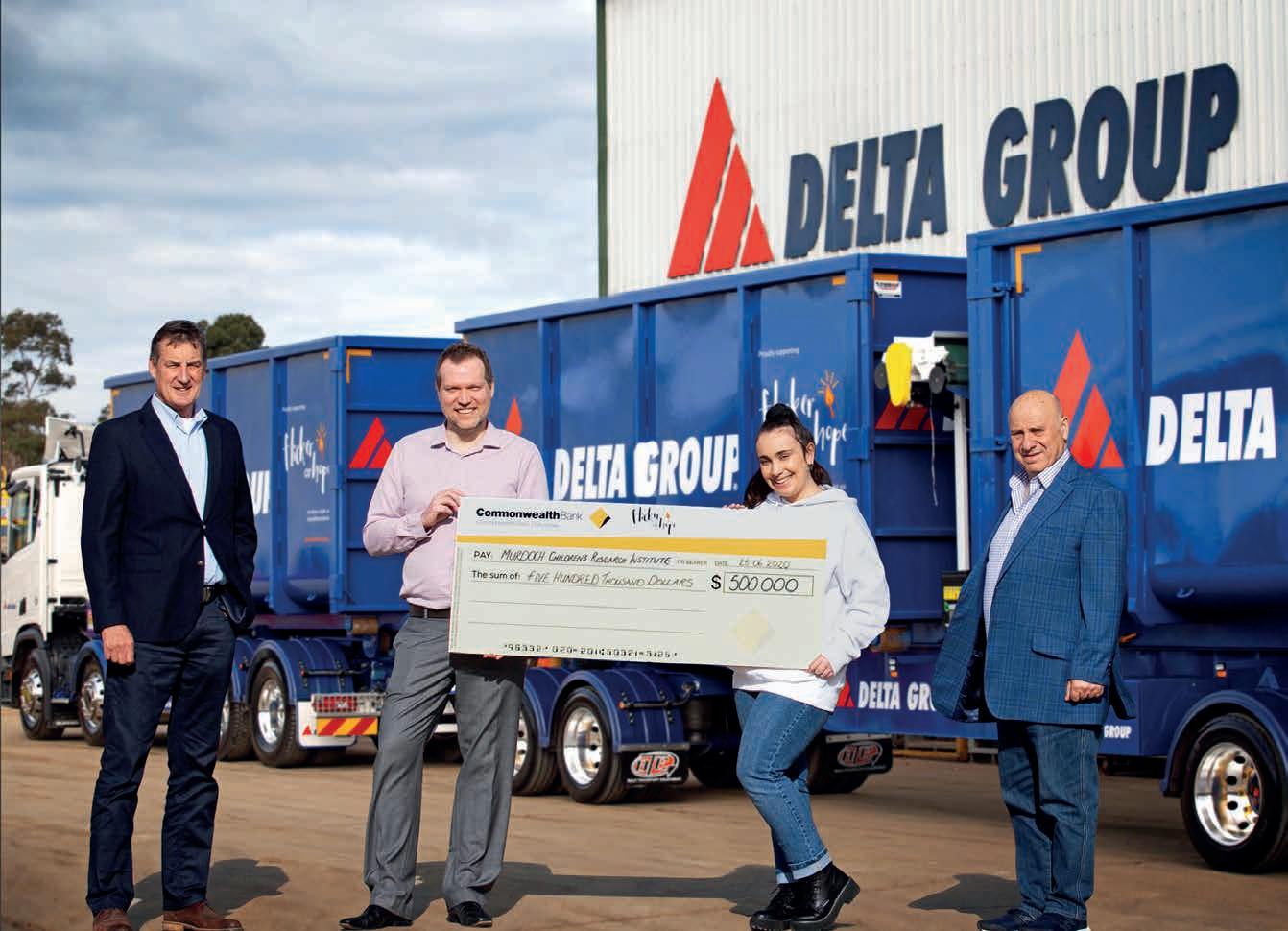
every single dollar donated is directed to research.
“The whole idea of the Flicker of Hope Foundation is to give people with neurofibromatosis a flicker of hope – without research and knowledge, there is just no hope,” Anne said.
Neurofibromatosis causes tumours to
grow on nerve endings throughout the body. Zoe, the face of Flicker of Hope Foundation, has neurofibromatosis type 1 (NF1). An estimated 10,000 Australians are affected by NF1, causing tumours known as neurofibromas that can result in chronic pain, blindness and cancer as well as learning difficulties, epilepsy and autism.
50 Quarry March 2023
COMMUNITY
Delta Rent’s
devastating consequences for those living with the condition.
The Foundation has provided funding grants for world leading research being conducted by the Murdoch Children’s Research Institute, The Royal Children’s Hospital, The Children’s Hospital at Westmead, The Peter MacCallum Cancer Centre, The Royal Melbourne Hospital, Walter and Eliza Hall Institute, Sydney Children’s Hospital Foundation, Children’s Medical Research Institute, and the Royal North Shore Hospital in Sydney.
Associate Professor Aaron Schindeler and his team at The Children’s Hospital at Westmead in Sydney are working on an exciting project searching for a cure for NF. Seed funding from Flicker of Hope has enabled this groundbreaking research, offering real hope for the future.
The Foundation relies on the generous support of donors and sponsors to continue to fund ongoing medical research. As a registered ACNC charity, all donations receive a tax receipt.
Major annual fundraising events include the family friendly “Kicking Butt for NF”, with AFL legends showcasing their kicking skills, aiming for a target on a larger-than-life butt! With over 22 legends in action – all generously donating their time – there’s plenty of entertainment and laughs for the crowd.
Long term sponsors return each year to support this most worthy cause, with their
A corporate golf day is held at Kingston Heath in Melbourne in November each year – with a host of celebrity golfers joining the teams for an amazing day out at one of Australia’s leading golf courses. If you’re a keen golfer, this is an opportunity not to be missed!
The Flicker of Hope team of ambassadors –Peter Daicos, Josh Daicos, Rodger Corser and Anthony Stevens – provide support throughout the year with fundraising


Limited places are now available for the 2023 Kicking Butt and Golf Day event. New sponsors are warmly welcomed personally by Con and Anne. If you’d like to get involved and help bring a flicker of hope please reach out to: info@flickerofhope.org.au •
Read more about NF and the vital research Flicker of Hope is funding by heading to: www.flickerofhope.org.au
Quarry March 2023 51
Associate Professor Aaron Schindeler and his team at The Children’s Hospital at Westmead, Sydney get a cheque.
Sept 2023
Melbourne’s leading construction and major infrastructure event

EXHIBITION SPACE NOW ON SALE
Inside Construction Expo will deliver

Targeted messaging in over 19 industry-leading publications that reach more than 80,000 decision makers across multiple sectors
Digital communications to 28,000+ engaged readers
Premium networking opportunity with industry leaders at the Foundation Awards gala dinner
insideconstructionexpo.com.au
Melbourne Convention and Exhibition Centre 20-21
IQA SUPPORTS INSIDE CONSTRUCTION EXPO


The Institute of Quarrying Australia (IQA) has signed up as the official Association Partner for the inaugural Inside Construction Expo 2023, due to be held from 20-21 September at the Melbourne Convention and Exhibition Centre.


In 2022, the construction industry faced its share of challenges – many of which could last through 2023 and beyond. Skilled labour shortages and supply chain disruptions caused by COVID-19 have forced the sector to adapt and evolve to keep pace with a booming national infrastructure pipeline. The Inside Construction Expo provides the ideal forum to discuss these challenges and how to address them.
“Quarrying is an important pillar of the construction industry,” said Kylie Fahey, IQA’s chief executive officer. “With labour and material shortages highlighted by Infrastructure Australia as potential risks for public and private infrastructure investments, IQA’s activities within the quarrying industry have never been more critical. Our technical trainings for quarry managers and workers ensure that quarries can use their full production capacity, while attracting new people to the sector.”
With a robust conference program featuring 100+ speakers, and a world-class exhibition showcasing the latest in equipment and technology, Inside Construction Expo is a must-attend event for industry members.
For more information about the Inside Construction Expo, visit: www.insideconstructionexpo.com.au
OUT AND ABOUT WITH THE IQA BRANCHES
NORTHERN NEW SOUTH WALES TOUR AND WORKSHOP
The Northern NSW sub-branch hosted three great events across the Northern Rivers in November to mark the end of 2022. Firstly, the Respirable Crystalline Silica training workshop which was at capacity saw delegates learn from theory and practical examples at Holcim Teven Quarry. The program included a site tour and plant inspection, with product demonstrations from Sandvik and Environmental Control Systems.
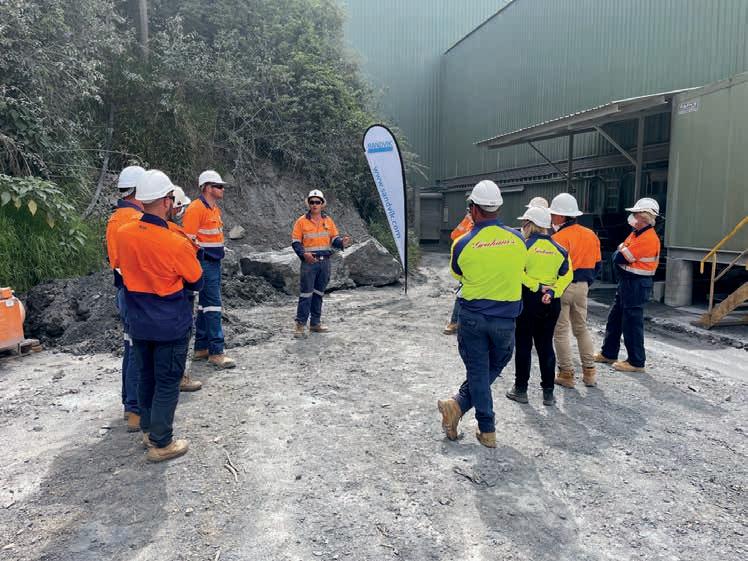
A Young Members Network (YMN) group simultaneously enjoyed site tours of both Boral and Holcim Teven Quarries, where both site quarry managers and supervisors generously gave their time to engage with the future leaders in our industry. To conclude the tours, Vanadium hosted a BBQ lunch for both groups with Andre’s specialty sausages being very well received.

Quarry March 2023 53 IQA NEWS
The Respirable Crystalline Silica training workshop was held at the Holcim Teven.
UPCOMING COURSES AND EVENTS
For a full list of upcoming courses and to download a course catalogue, visit the IQA website.


NEWS
IQA
54 Quarry March 2023 Event Date Time [AEDT]Location Emergency Management webinar March 141:00pm – 2:00pmOnline Mental Health & Wellbeing Awareness online workshop March 1612:30pm – 4:30pmOnline Learning from Disasters online workshop March 218:00am – 4:00pmOnline Electrical Awareness online workshop March 239:00am – 1:00pmOnline Quarry Roads and Onsite Vehicles Safety webinar March 231:00pm – 2:30pmOnline Plant and Equipment: Mobile Plant online workshop March 2811:00am – 12:00pmOnline Plant and Equipment: Maintenance online workshop March 281:00pm – 2:00pmOnline Plant and Equipment: Environmental Impact online workshop March 283:30pm – 4:00pmOnline NQLD branch Mackay dinner meeting March 28To be announcedMackay (exact location TBA) Chain of Responsibility online workshop March 301:00pm – 4:00pmOnline Contractor Safety Management online workshop April 1812:30pm – 4:30pmOnline Understanding Bullying and Harassment in the Workplace webinar April 1912:00pm – 1:00pmOnline QLD branch technical lunch and learn meeting April 2012:00pm – 3:00pm Victoria Park Function Centre Verification of Competency (VoC) online workshop April 201:00pm – 5:00pmOnline Slope Stability online workshop April 2710:00am – 5:00pmOnline
Training is one way to give your team the opportunity to discuss risk, controls and hazards in a safe environment and allow time to reflect on areas that can get missed in the day to day.



The IQA is a leading provider of training for the extractive and associated industries. Contact us today to help you plan cost effective training for your teams.

Email: education@quarry.com.au Visit our website: www.quarry.com.au
CONNECTING
EXTRACTIVE
ASSOCIATED INDUSTRIES Email: education@quarry.com.au Visit our website: www.quarry.com.au Are your teams able to have effective safety conversations? Have you reviewed the effectiveness of your controls? Is hazard identification too routine?
EDUCATING AND
OUR
&
IQA MEMBER SPOTLIGHT
YOUNG MEMBER NETWORK - #SEEUSBEUS
Operations manager at Gromac Quarries and Young Member Network (YMN) coordinator for Northern Queensland, Paul Hooton, talks about the benefits of joining the YMN and how it plays an important role in facilitating career development.

How does the YMN support young people in the quarrying industry and help to facilitate growth?
There is a lot of support to be found within the IQA and for me, the biggest support that I’ve found is that I can interact with leaders in the industry because I am a part of the IQA. The membership isn’t about just going to meetings and having your hat in the ring so to speak, but it’s also staying in contact with each other for when we want to bounce things off of someone else with different experiences to you. The partnerships and relationships you can establish through the YMN and by extension, the IQA, are very important for growing in the industry.
As coordinator of the Northern Queensland YMN, what is some advice you can share with the young people in and around the quarrying industry?
There’s a lot of knowledge in our industry which is known only by those who have been active in the industry for years and as much as we try, it can be hard to get in touch with those people and harder still to gain access to that knowledge. The YMN is a fantastic tool for bridging the gap between the newer, younger generation of workers in the industry and those who have been a part of the industry for years. Through joining the YMN, you’re indicating that you want to learn and develop a long and fruitful career in the industry and through that, people are going to be able to share those experiences with you.
What role can young people play in the future of the quarrying industry?

Education is a two-way street. As important as it is for younger generations to learn from the older generation who have experience in the industry, it is equally important for younger people to teach the older quarrying industry ways in which technology has continued to evolve. The fresh insight young people provide and the levels of diversity they offer to the industry are incredibly important.
What upcoming events are you most excited about from the IQA?
Golf days are definitely the highlight for the year. The Health and Safety Conferences
also provide good information with what’s going on in the industry and how we can continually improve. There has been a number of invitations from the other YMN and broader IQA for events outside my region, which I would love the chance to be able to get over to.
Has there been any long-lasting connections made through your time with the YMN?
I’ve been with the IQA since 2018, and in that time, I’ve developed good relationships with peers and industry leaders of all ages. The social element of the YMN and the broader IQA cannot be stated enough. There is such great potential for both professional and personal growth within the IQA.
Is there anything you would like to share to help people join the YMN?
The YMN supports the introduction of the new generation of industry leaders to the industry and aids them in connecting with other members of their own age that they can relate to. Being a YMN coordinator, I can assist with bridging the gap between the older and younger generations, through IQA events and meetings. It’s hard to consider sometimes, but we were once all young
IQA’S YOUNG MEMBER NETWORK:
The IQA’s Young Member Network (YMN) has been established to provide our young members and those interested in the quarry industry with guidance, support and an opportunity to develop successful careers within the industry. Our national network has been established so like-minded young people can get to know their peers, share ideas and experiences, build key industry contacts and perhaps develop new friendships. The IQA’s Young Member Network is open to any IQA member 35 years old or younger.
What does the YMN provide for its young members?
1. Supp role by having a network you can turn to.
2. Forums and events at state and national levels targeted at young members, providing essential industry workshops as well as social interactions.
3. Guidanc with options for career development.
4. Assistance for those taking their first step towards professional recognition via the range of professional development opportunities on offer.
For further information regarding the activities of the IQA’s Young Member Network, please contact the IQA on admin@quarry.com.au
people just starting out in the industry, so we understand and want to help the younger generation succeed in the industry. If anyone is thinking about joining the YMN or have people who would benefit from joining, please get in touch with your local coordinator. We’re really keen to hear from you.

56 Quarry March 2023
Paul Hooton on-site at Gromac Quarry.
BUY. SELL. HIRE. QUARRY MARKETPLACE

MARKETPLACE AUSTRALIA’S FIRST EVER ONLINE PORTAL DEDICATED TO BUYING, SELLING AND HIRING QUARRY EQUIPMENT. This is your one-stop-shop for buying,
and hiring a variety of
and more, from
and
Be it a mini excavator or a complete sand washing plant, you can advertise it on the Quarry Marketplace to reach the right buyer. For advertising opportunities, contact ben.coleman@primecreative.com.au or call 0466 545 664 Scan the QR code to find out more.
selling,
machinery, including excavators, loaders, dozers, rollers, graders, crushers, earthmovers
both dealers
private sellers.
ROMAN CONCRETE COULD AID MODERN CONSTRUCTION
instead of, or in addition to, slaked lime, which is combined with water first. Mixing with quicklime would have set off chemical reactions, causing extreme temperatures – known as “hot mixing” –and creating the calcium deposits.
The deposits also served a purpose, the researchers found. They theorised that as water entered cracks in the concrete, it could dissolve the chunks of calcium. Then, the dissolved chemicals could recrystallise or react with other materials, filling the cracks and strengthening the structure.
The team propose the resulting lime clasts could have helped the concrete “self-heal”, as water seeping into cracks in the material would dissolve calcium carbonate as it passed through the lime
In recent times, the production of sustainable concrete by self-healing technology has become more common in the construction industries worldwide. Self-healing concrete is mostly defined as the ability of concrete to repair its cracks autogenously or autonomously. It is also called self-repairing concrete.
Ancient Roman concrete structures have survived millennia, but the secret to their durability has remained an enigma. Now researchers say they have discovered one possible explanation: the technique used to make the material may have helped to give it selfhealing properties.
“The Pantheon would not exist without the concrete as it was in the Roman time,” Admir Masic, MIT professor of civil and environmental engineering, told the Guardian

In a new paper, published in the journal Science Advances, Masic and other researchers propose that the concrete mixed by Romans could repair cracks on its own, a finding that provides a blueprint for improving modern concrete.
For many centuries, and throughout the entire ancient Roman Empire, architectural elements, such as walls and foundations, and infrastructure systems, including aqueducts, roads, and bridges, were created from unreinforced concrete.
This concrete was typically composed of volcanic tuff and other coarse aggregates, and bound by a mortar based on lime and pozzolanic materials such as volcanic ash.
To study the durable building material, researchers took mortar samples from walls in the ancient city of Privernum, near Rome. The samples had similar compositions to other Roman concrete samples from the same period.
The mortar contained small white chunks of calcium deposits, called lime clasts, which are not found in modern structures. Previously, researchers thought the chunks meant that Romans weren’t mixing the concrete well enough. But Masic wasn’t convinced.
“For me, it was really difficult to believe that ancient Roman (engineers) would not do a good job, because they really made careful effort when choosing and processing materials,” he told CNN.
The analysis revealed the lime clasts’ origin: ancient engineers used the dry, most reactive form of limestone called quicklime,
Cracks in concrete are a common phenomenon due to concrete’s relatively low tensile strength. Durability of concrete is impaired by these cracks since they provide an easy path for the transportation of liquids and gases that potentially contain harmful substances. If microcracks grow and reach the reinforcement, not only may the concrete itself be attacked, but also the reinforcement steel bars will be corroded.
Taking inspiration from Roman concrete “might be a cost-effective way to make our infrastructure last longer through the self-healing mechanisms we illustrate in this study,” Masic told the Guardian
Since around eight per cent of global greenhouse gas emissions come from making cement, longer-lasting concrete could also reduce the industry’s contribution to climate change. •
“Hot mixing: Mechanistic insights into the durability of ancient Roman concrete,” Science Advances, Vol. 9, No. 1
58 Quarry March 2023
TALK
GEOLOGY
Self-healing concrete is mostly defined as the ability of concrete to repair its cracks autogenously or autonomously.
Research finds secrets in the durability of buildings such as the Pantheon could be in the techniques used at the time.
‘SELF-HEALING’






SmartTechAustralia.com.au



 NORMAL BUCKET The XMOR® excavator bucket is breaking ground within the quarrrying industry.
ADVANTAGES OF RUBBER DONUT SPRINGS
ToThink Engineering is the sole supplier of AB Pneumatics products.
NORMAL BUCKET The XMOR® excavator bucket is breaking ground within the quarrrying industry.
ADVANTAGES OF RUBBER DONUT SPRINGS
ToThink Engineering is the sole supplier of AB Pneumatics products.




















































































































































 Operator comfort was a key factor for Gradco in choosing the SK380XD.
Operator comfort was a key factor for Gradco in choosing the SK380XD.



































